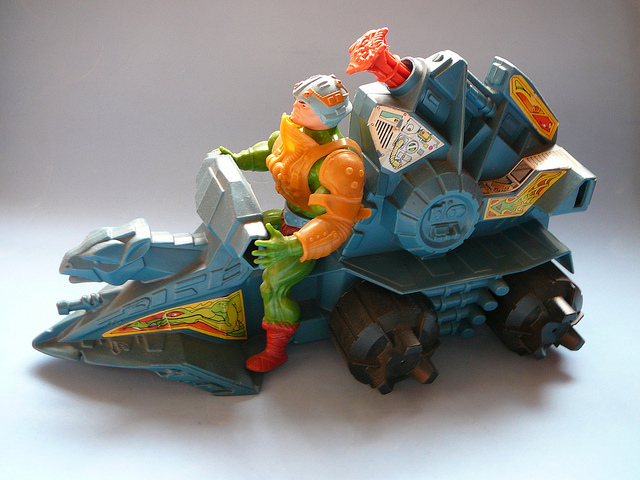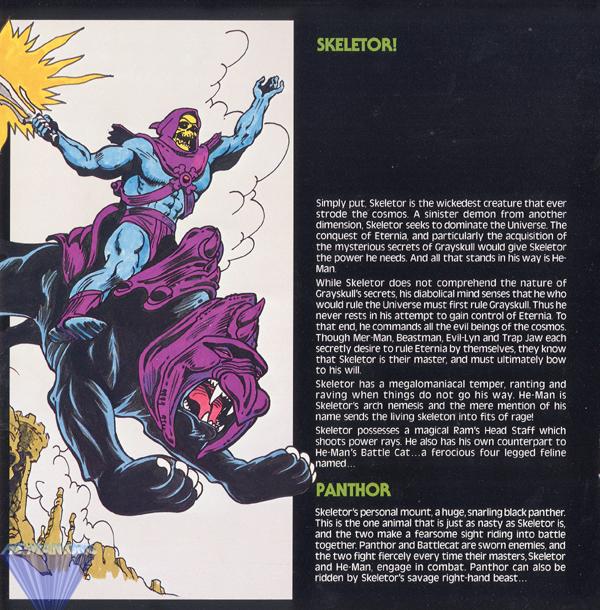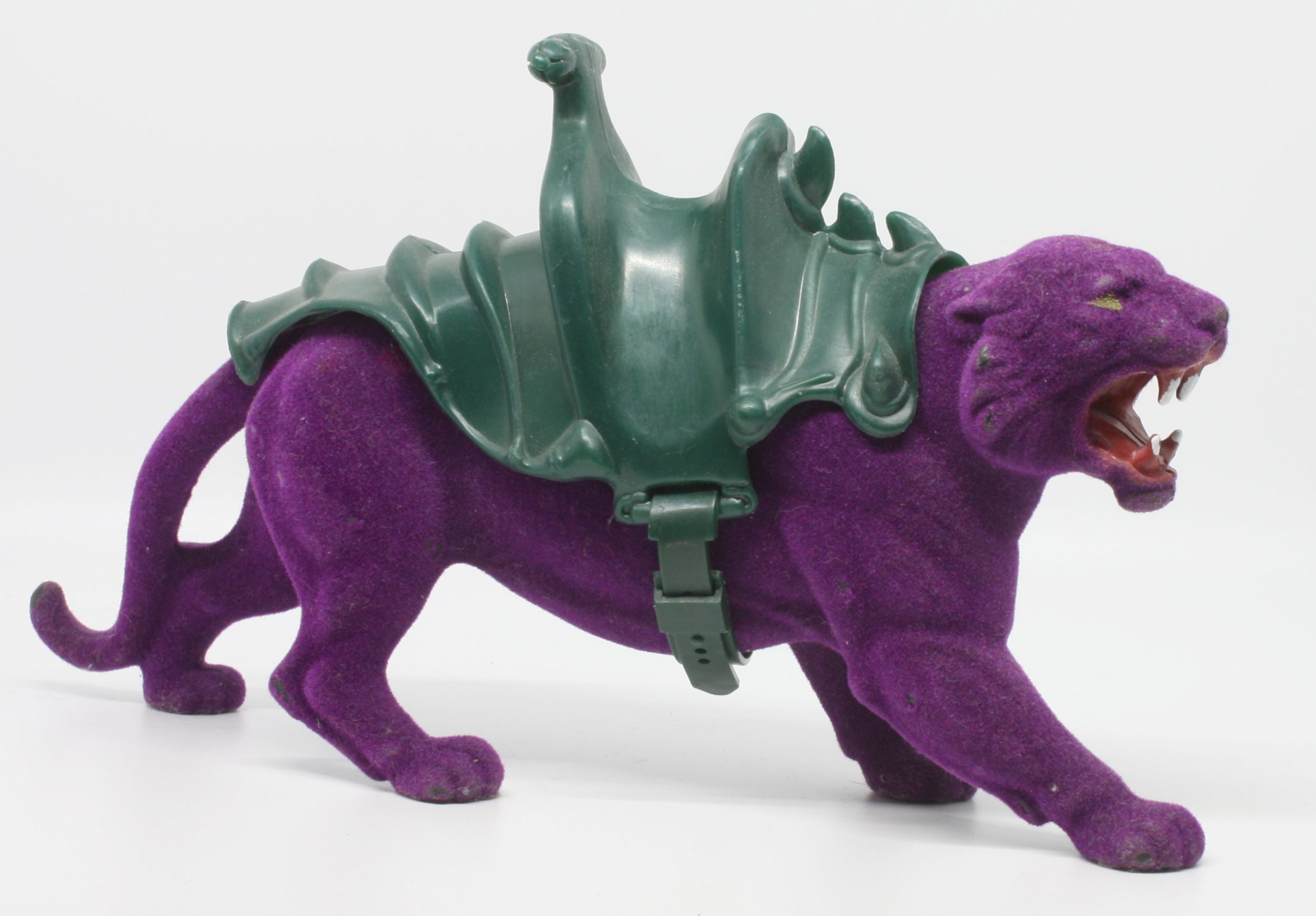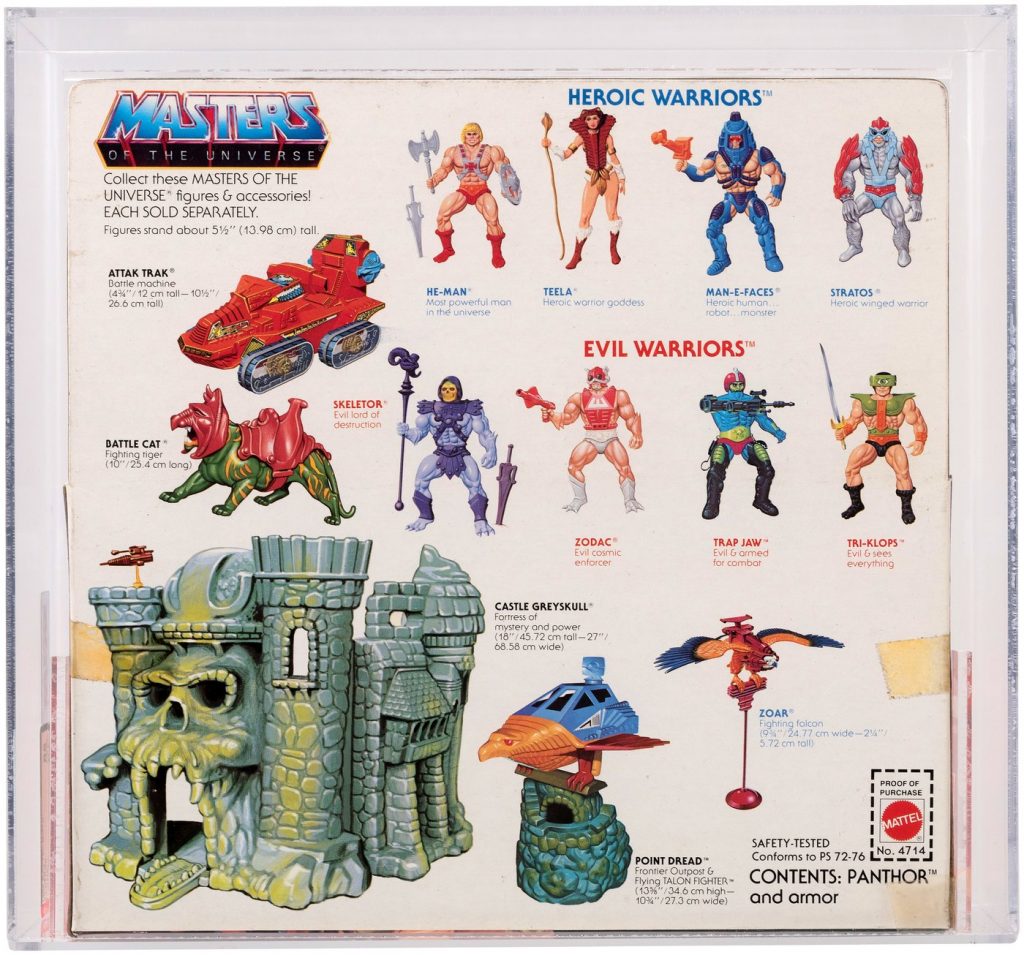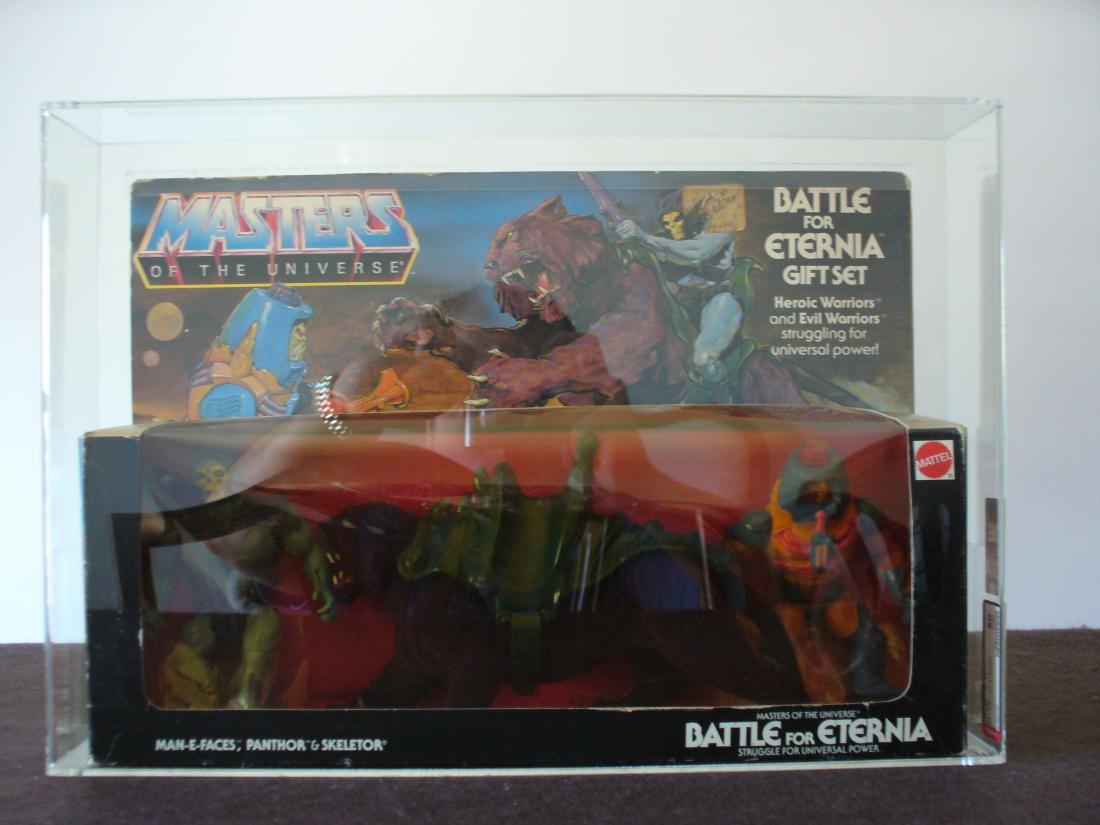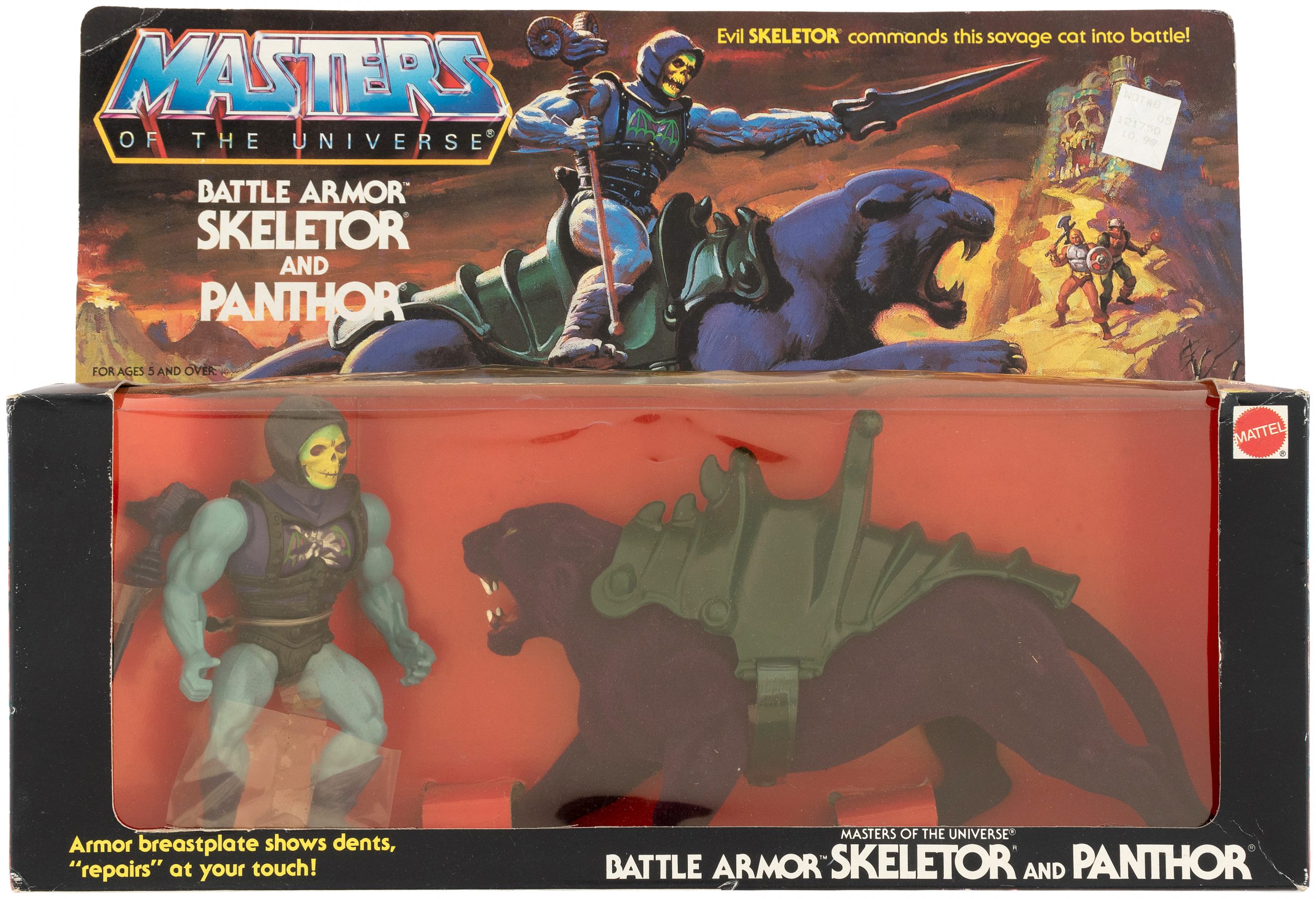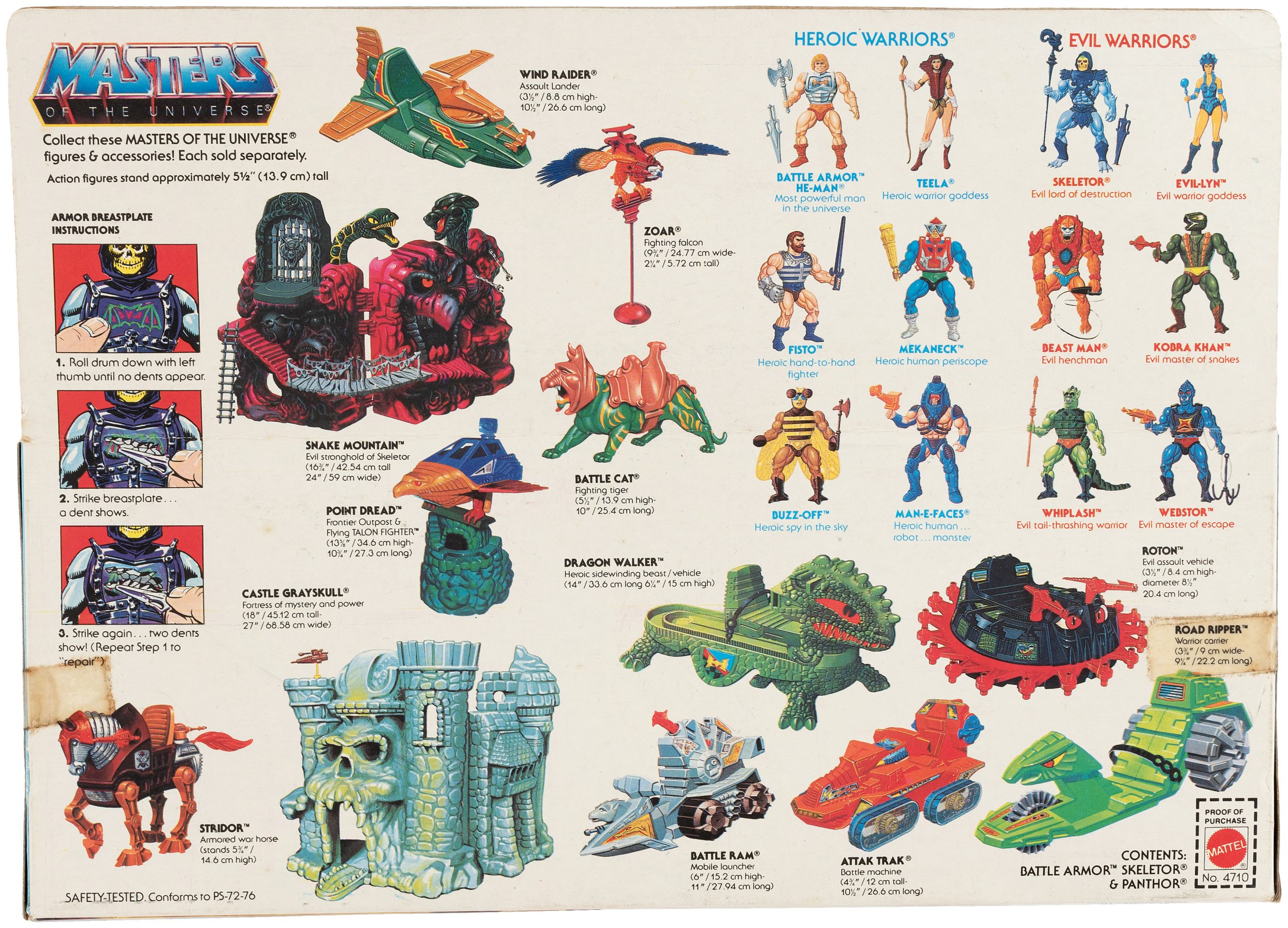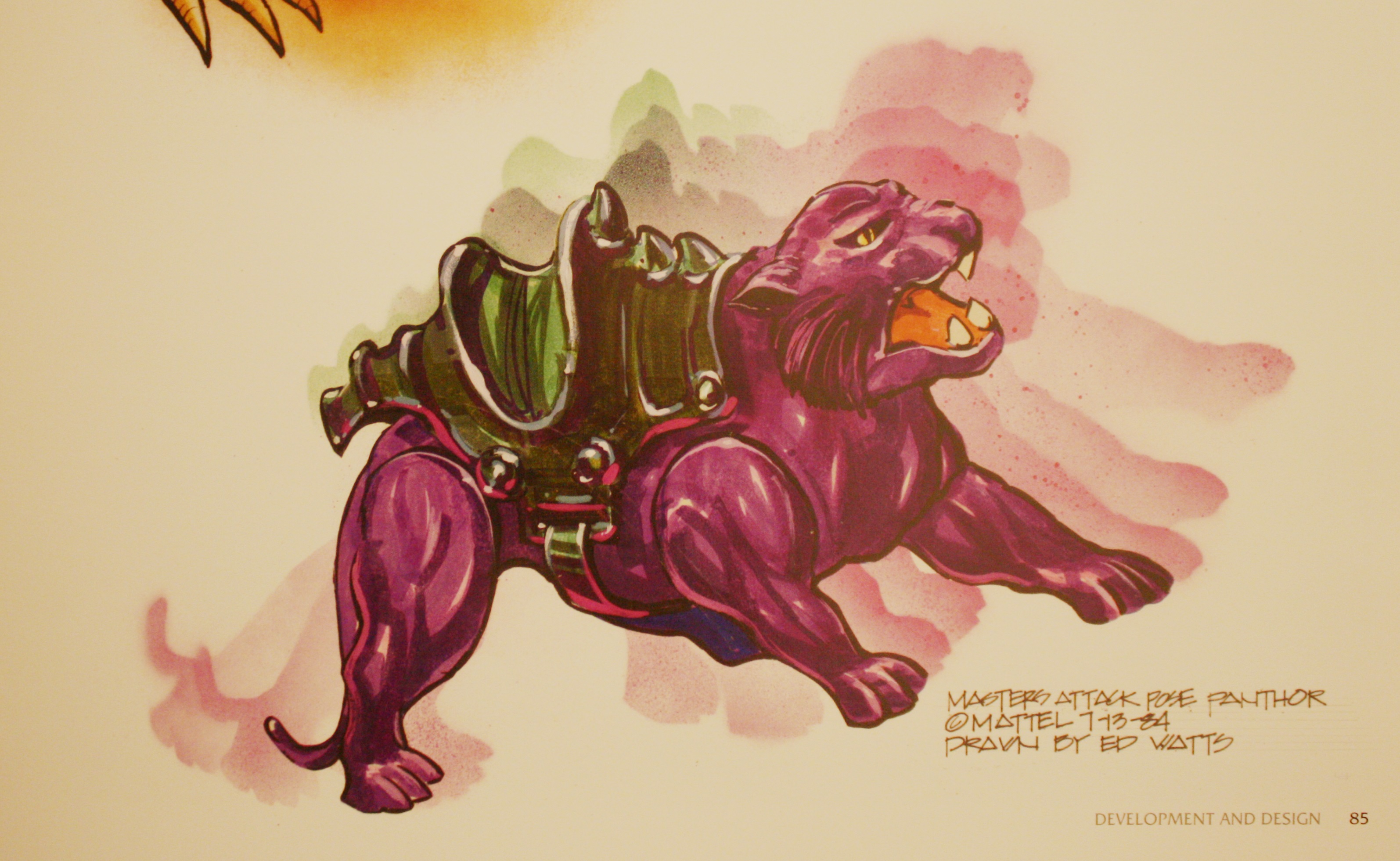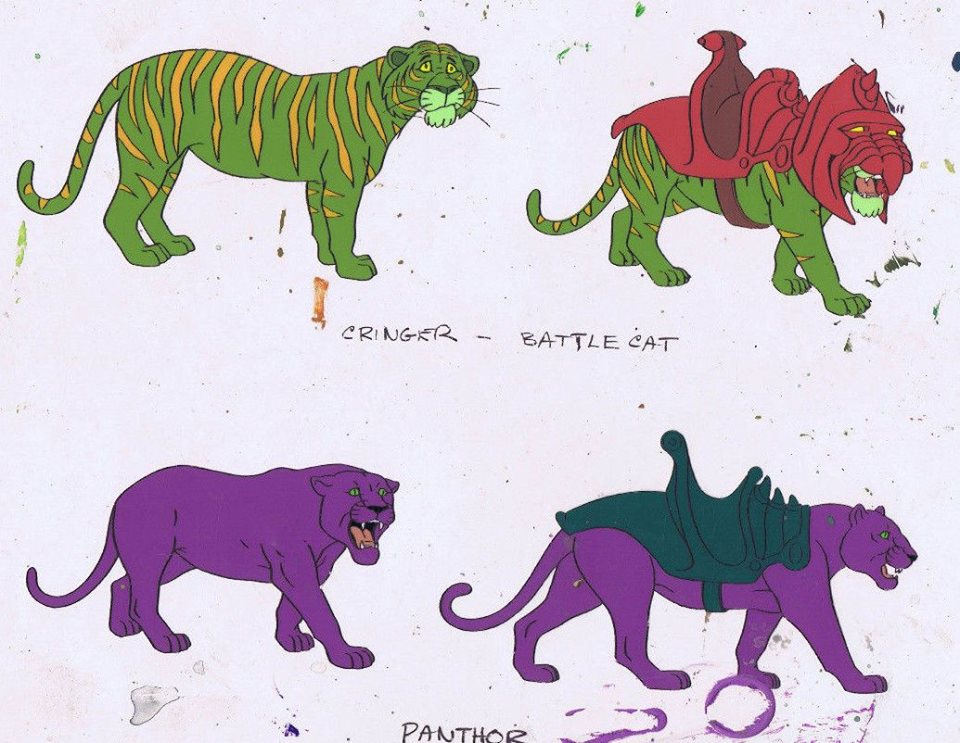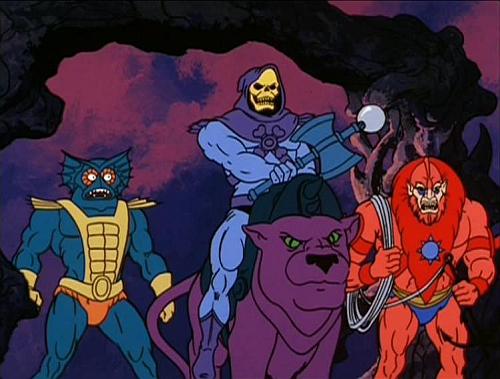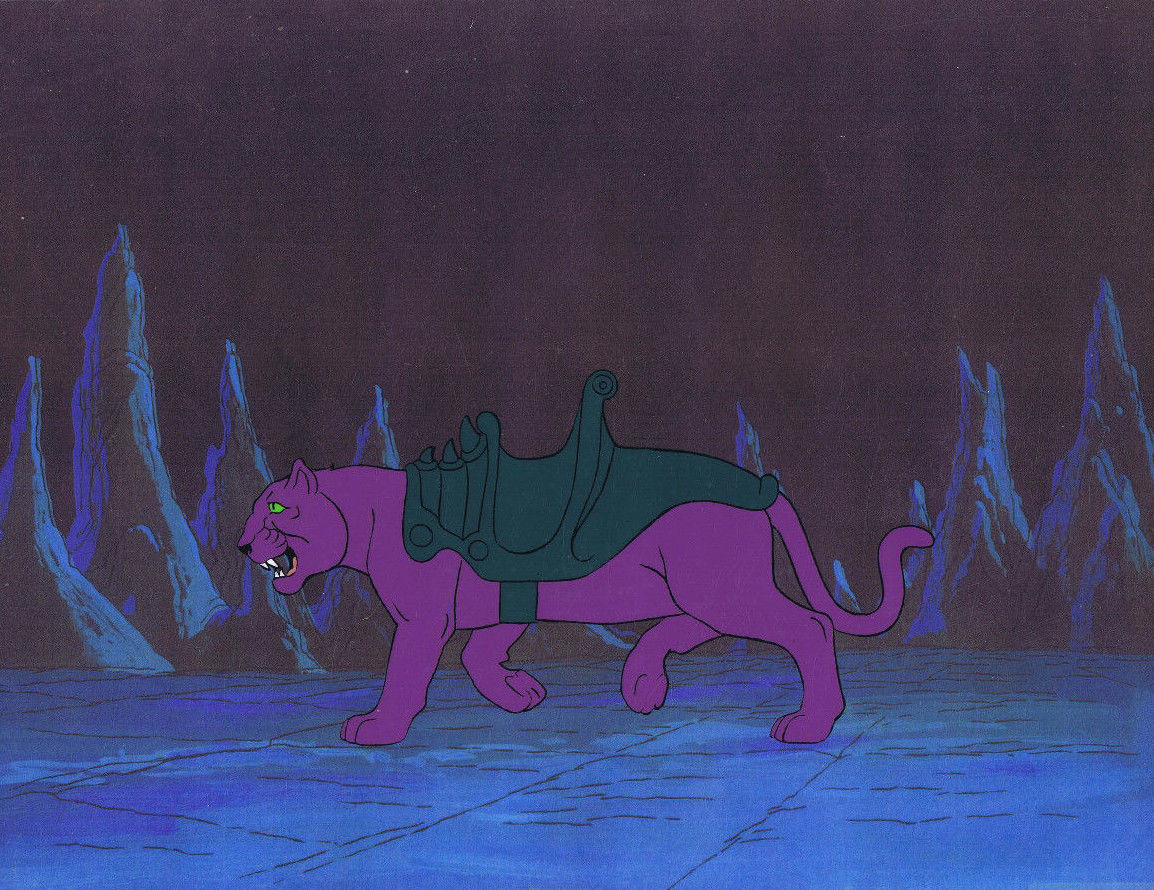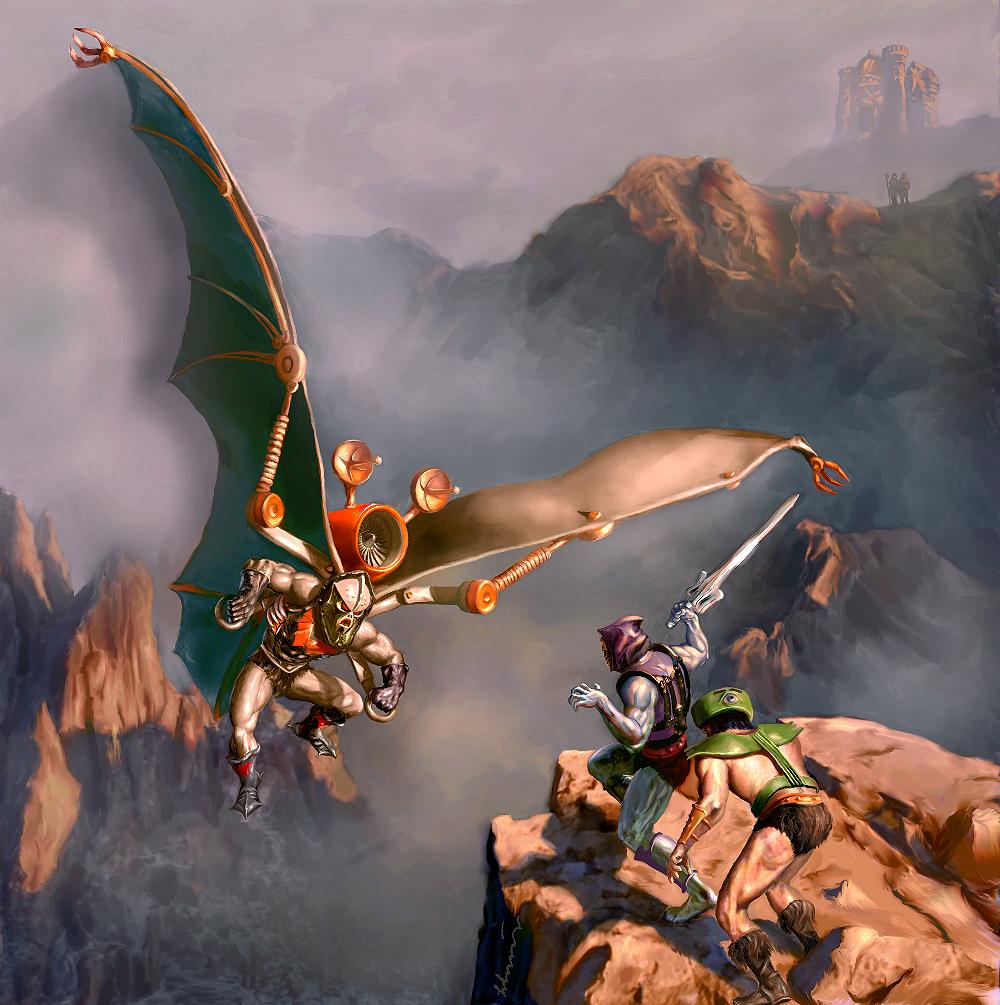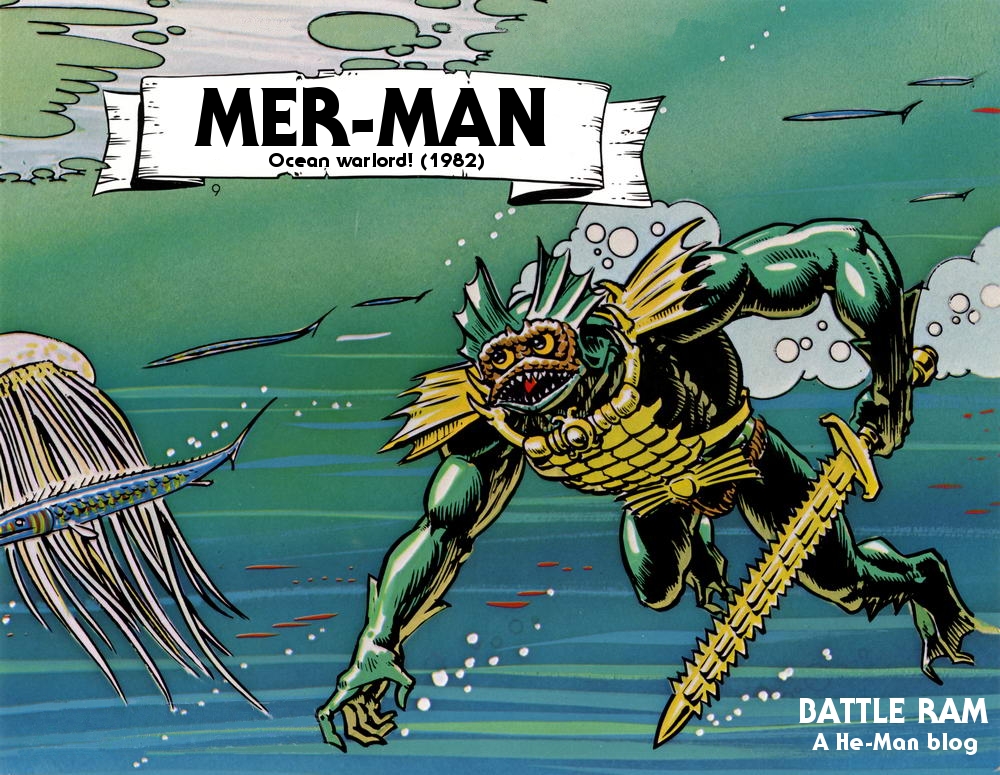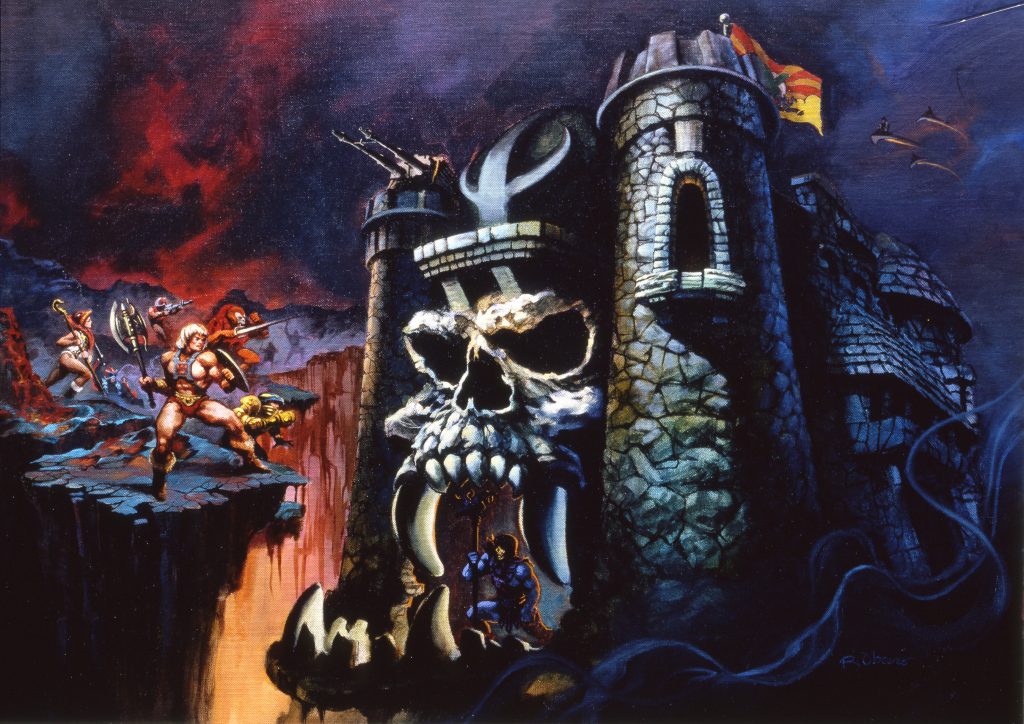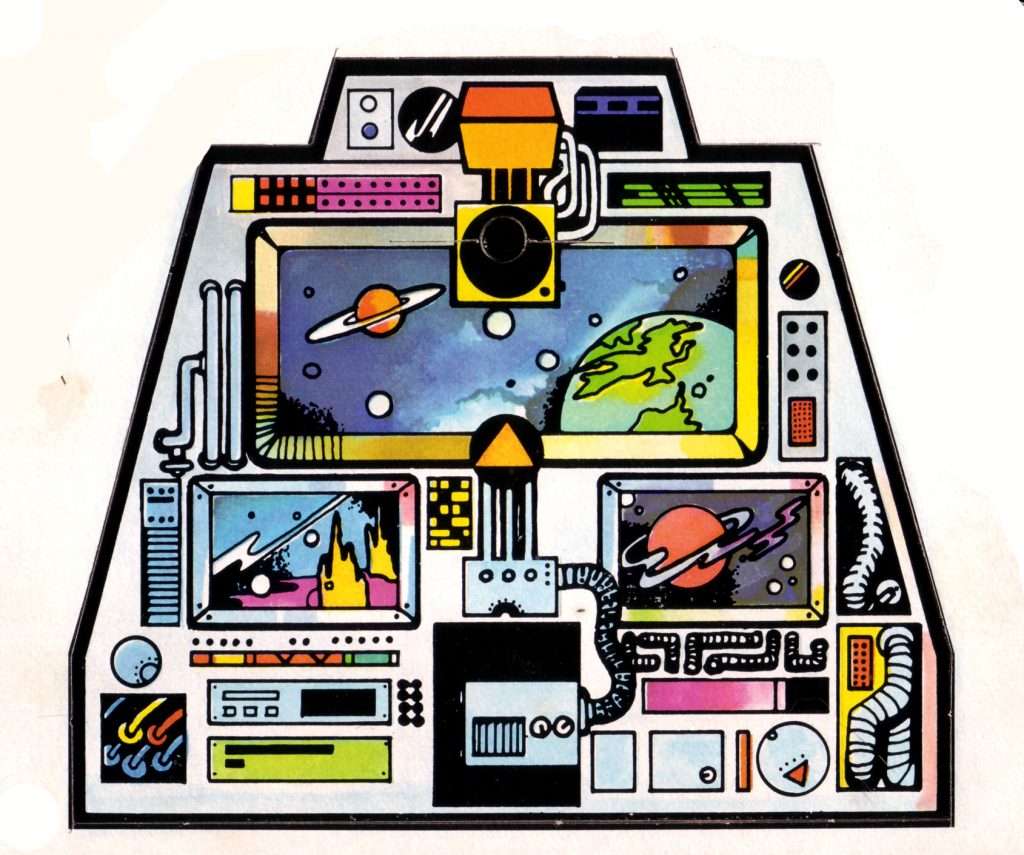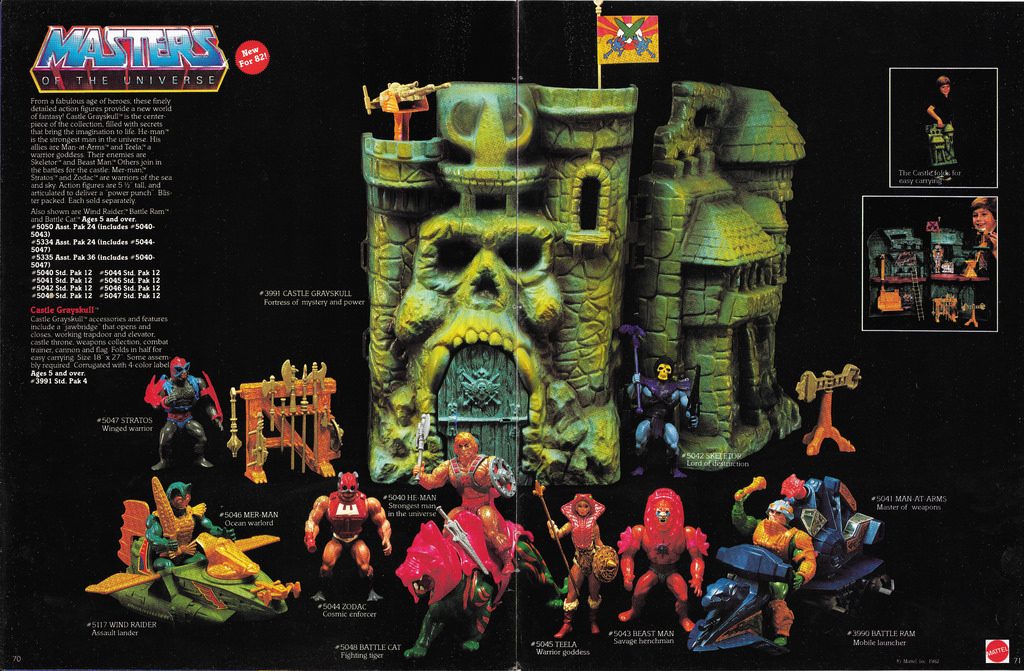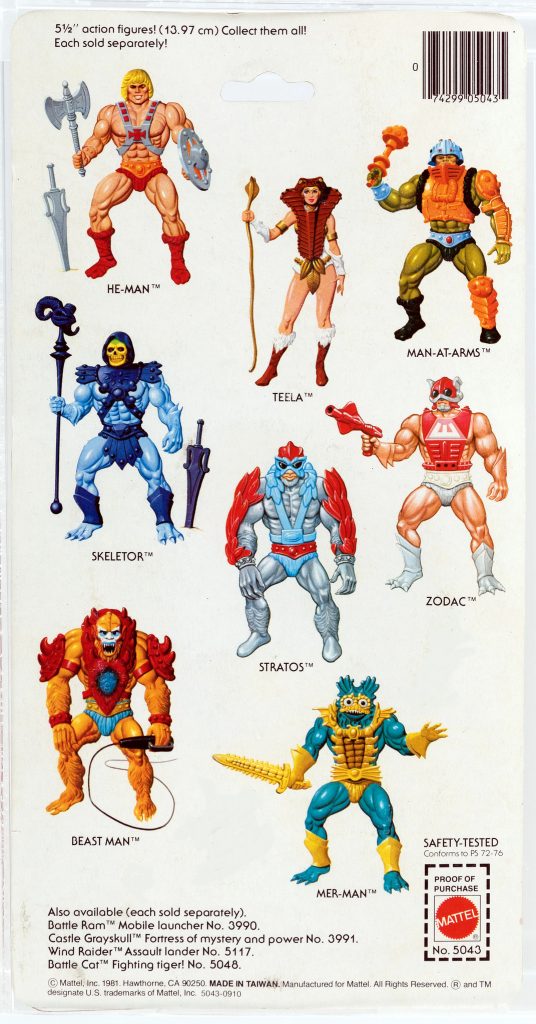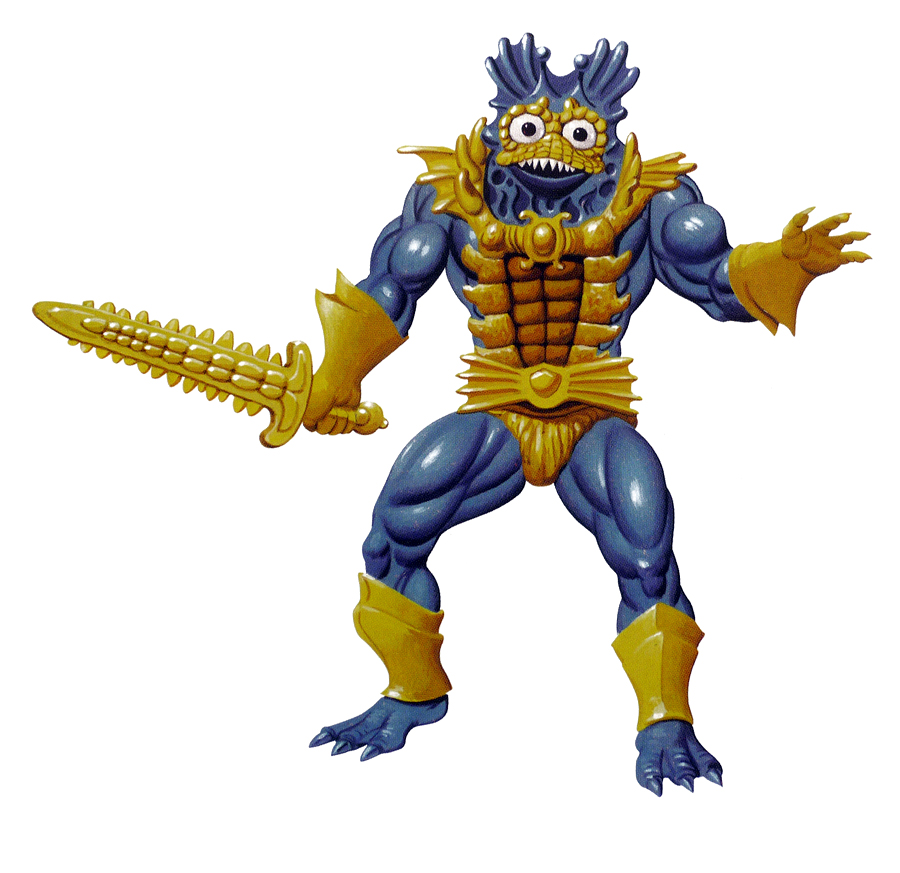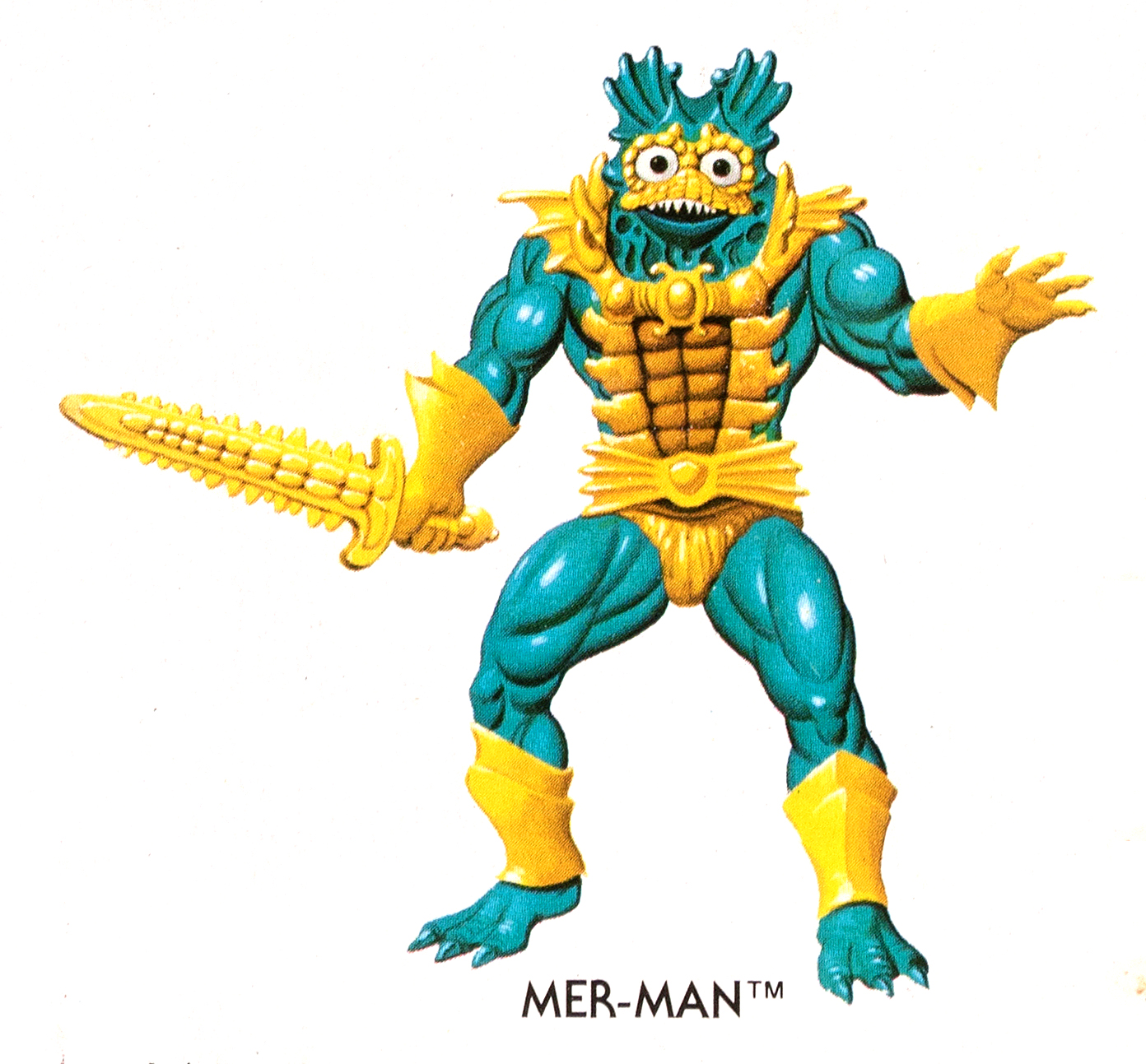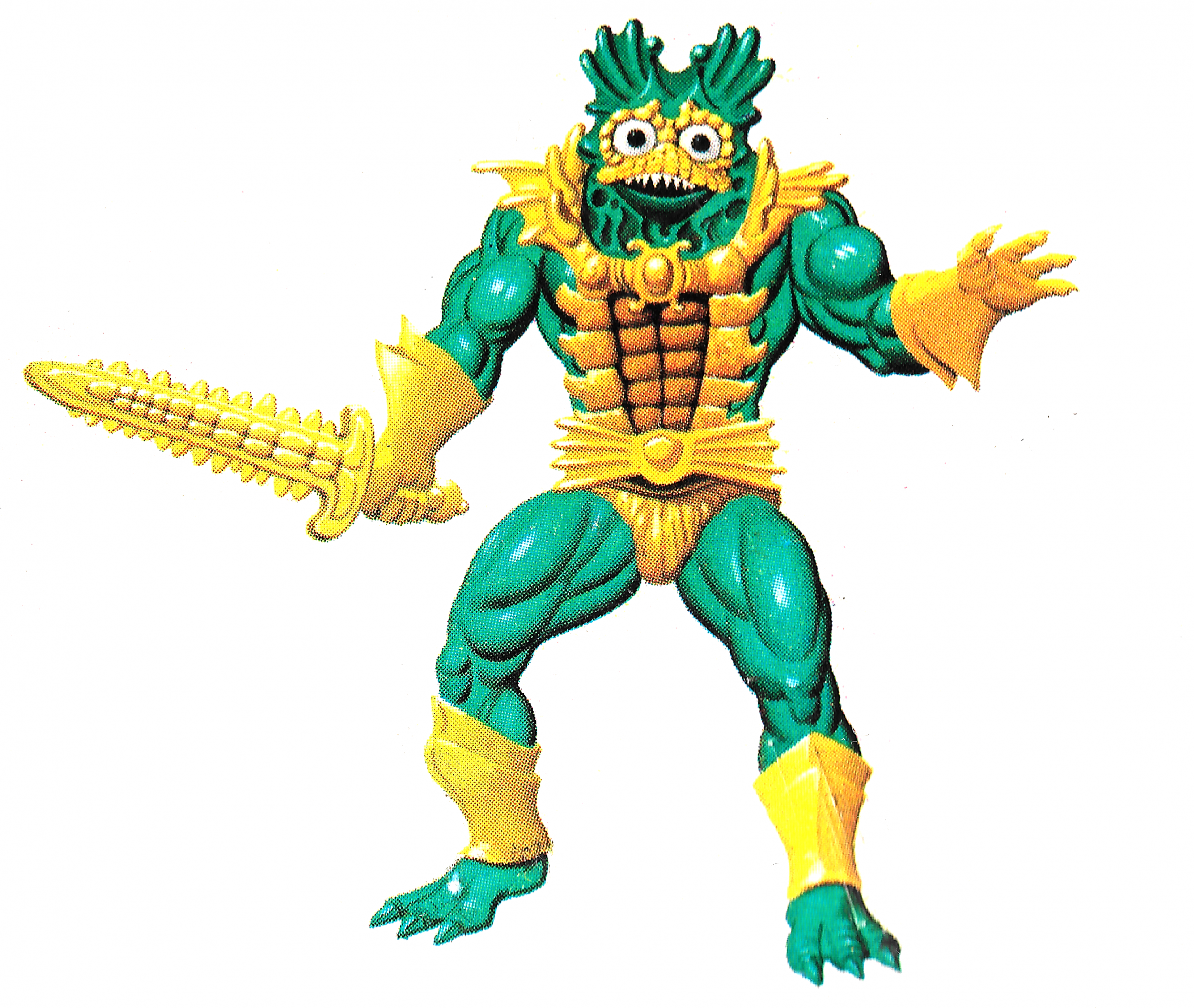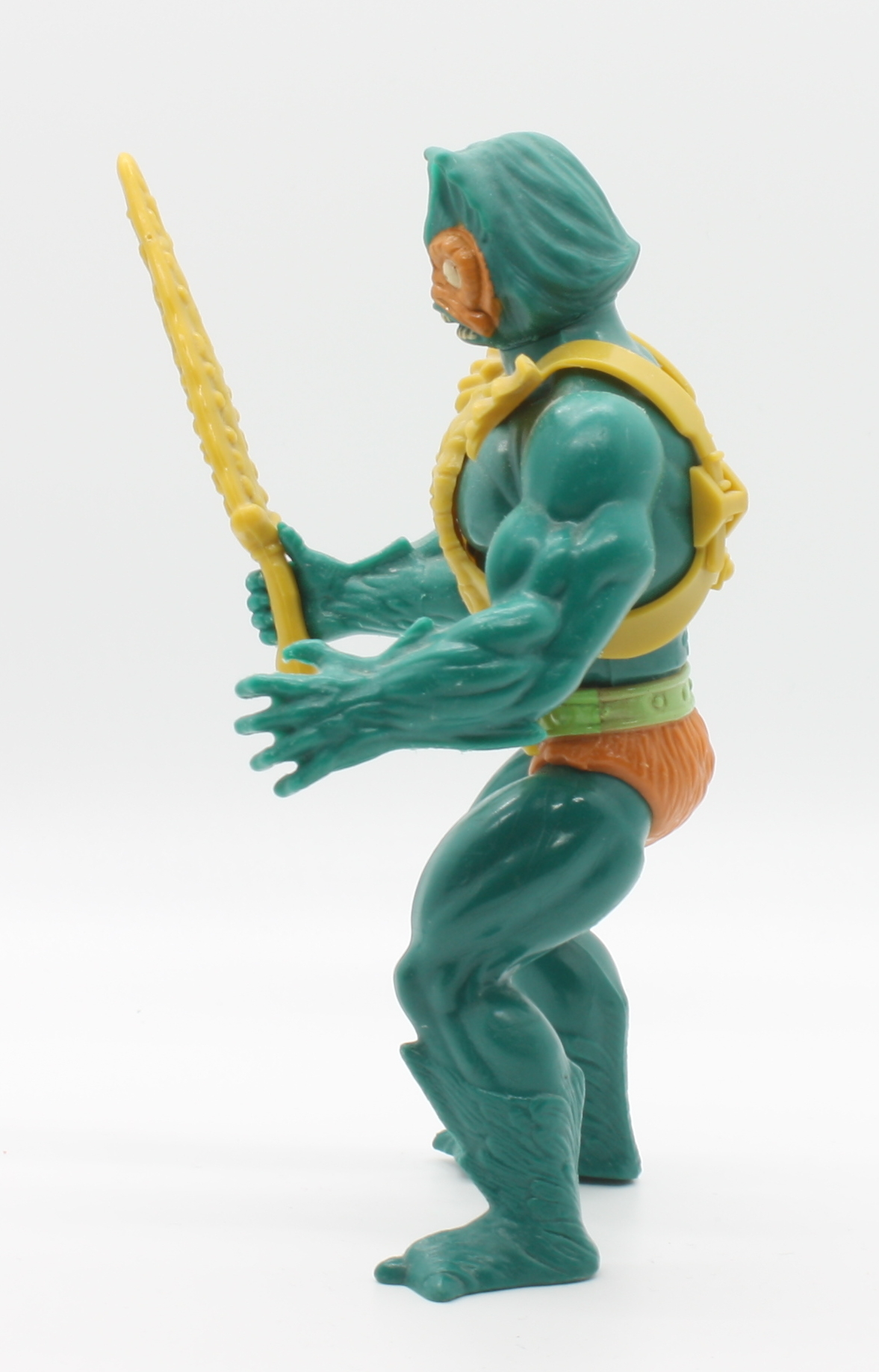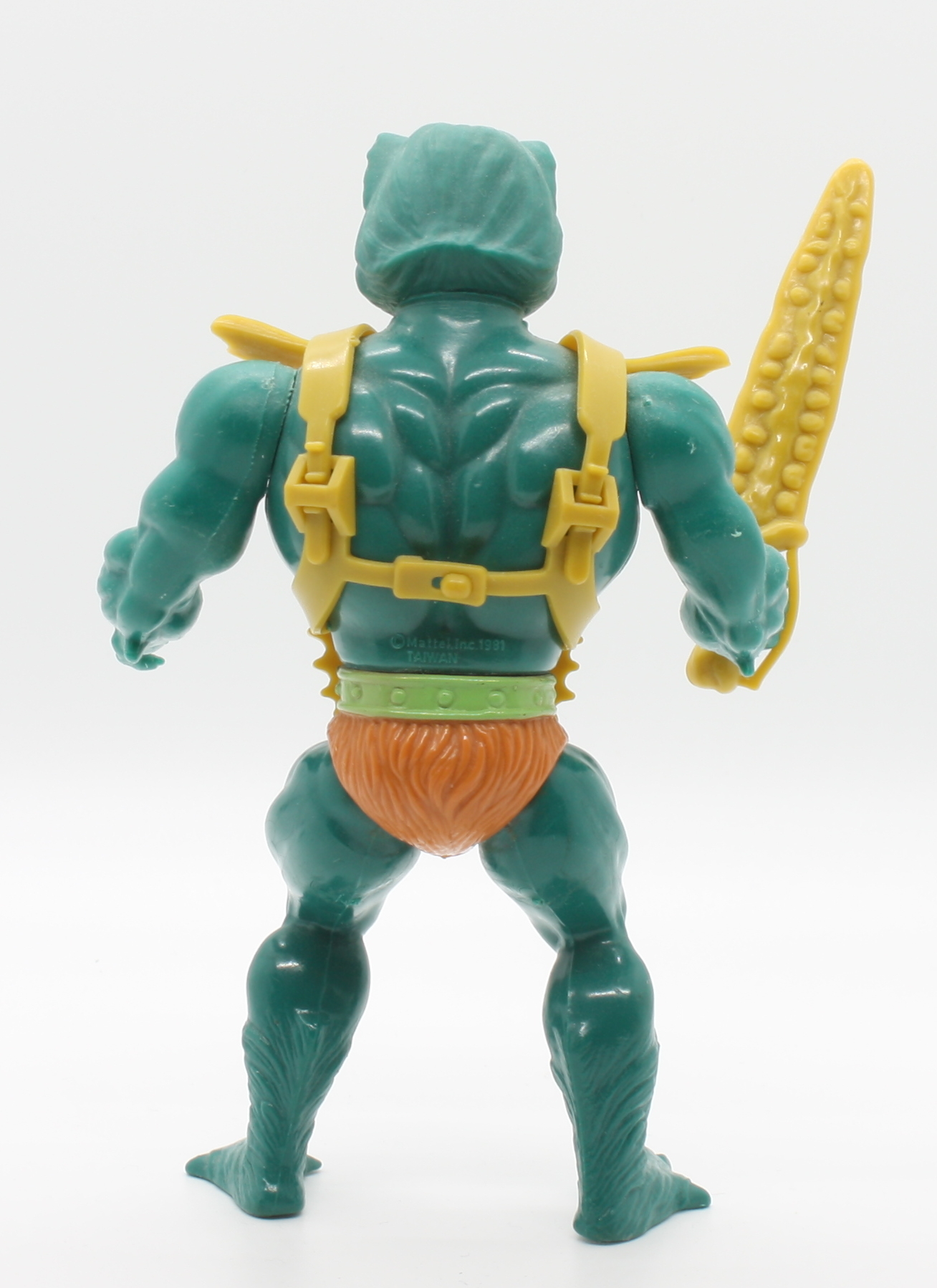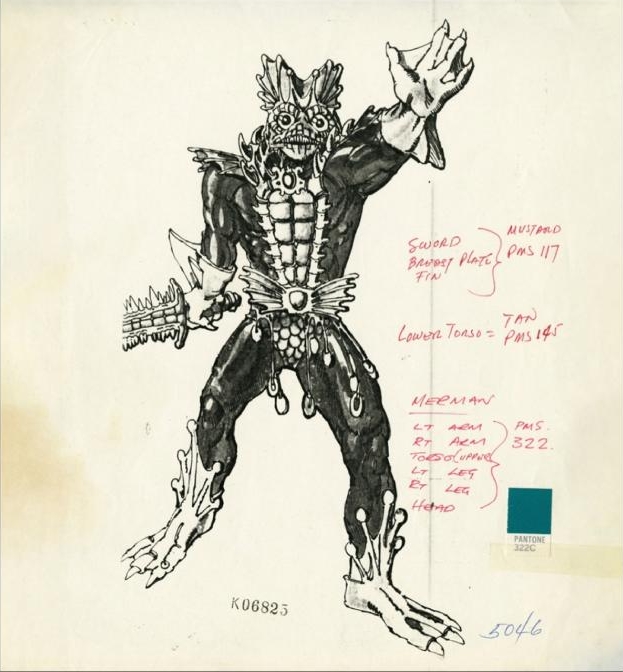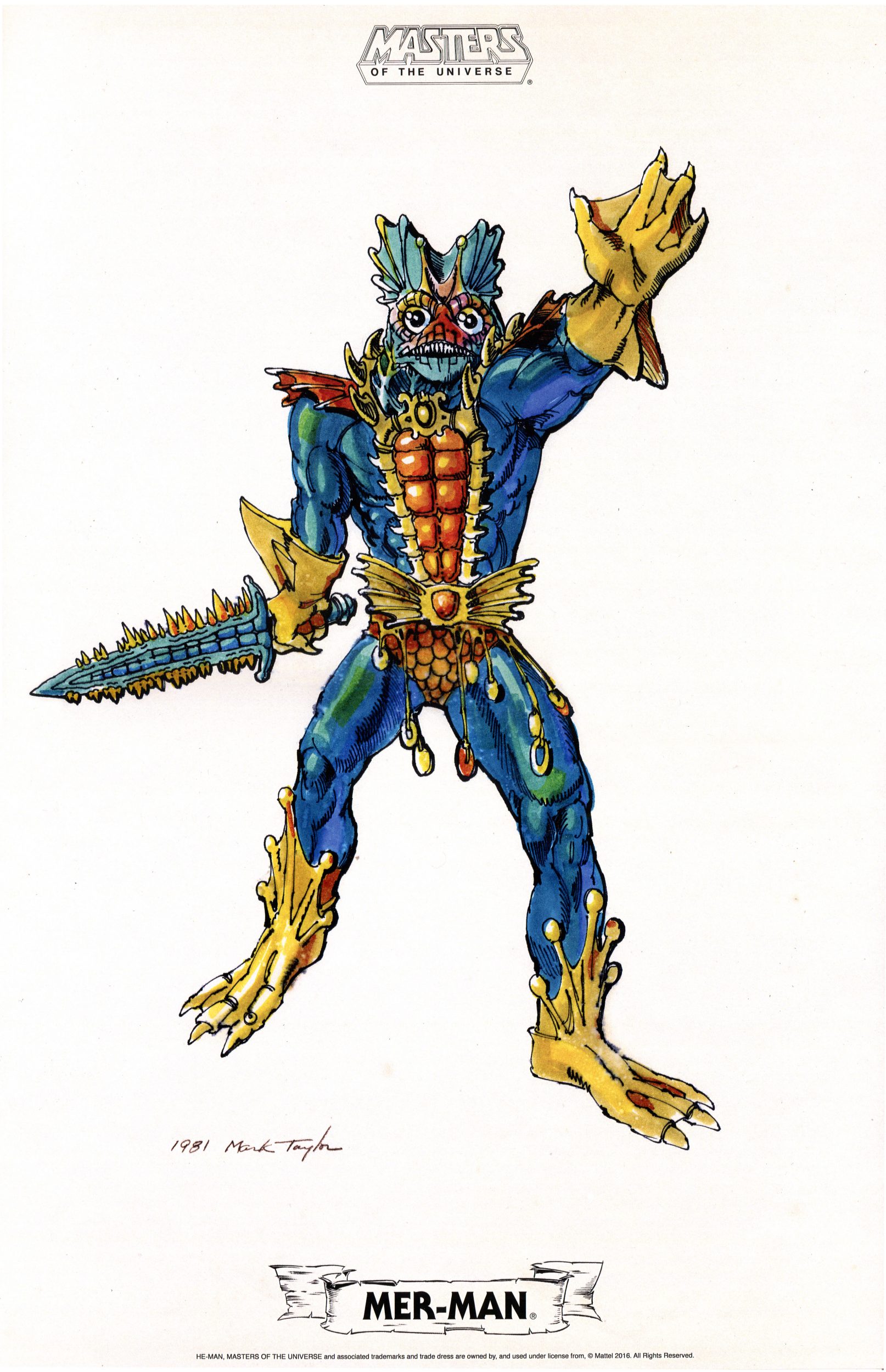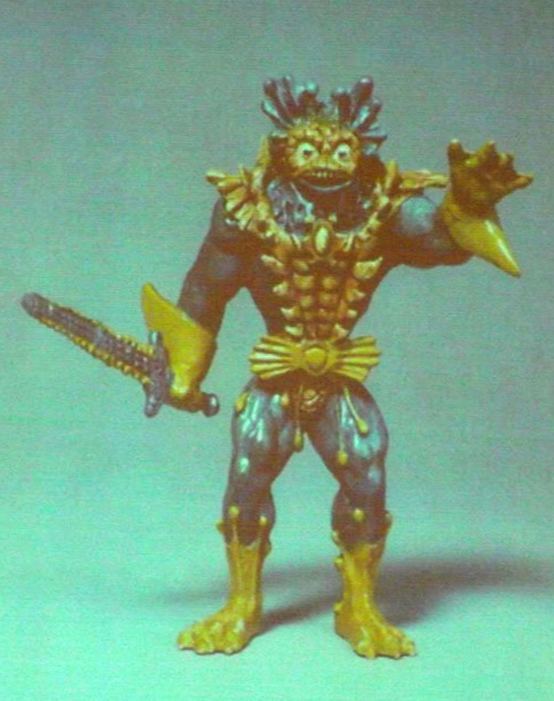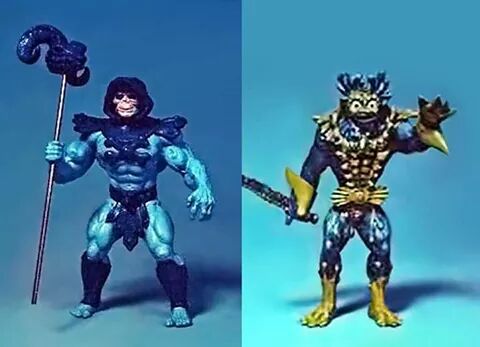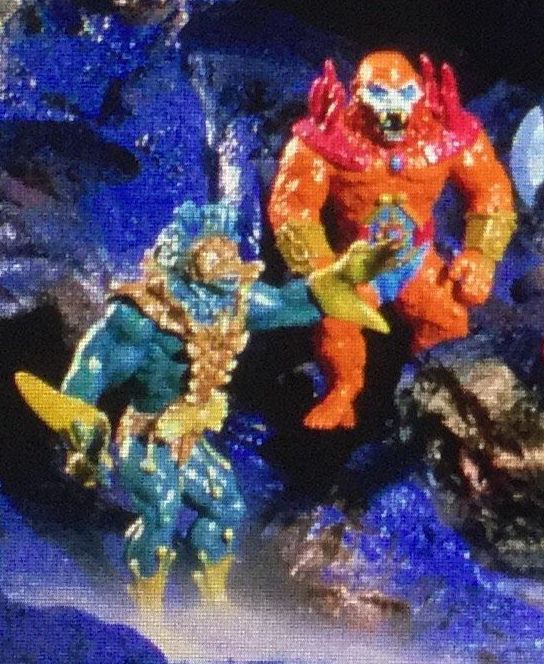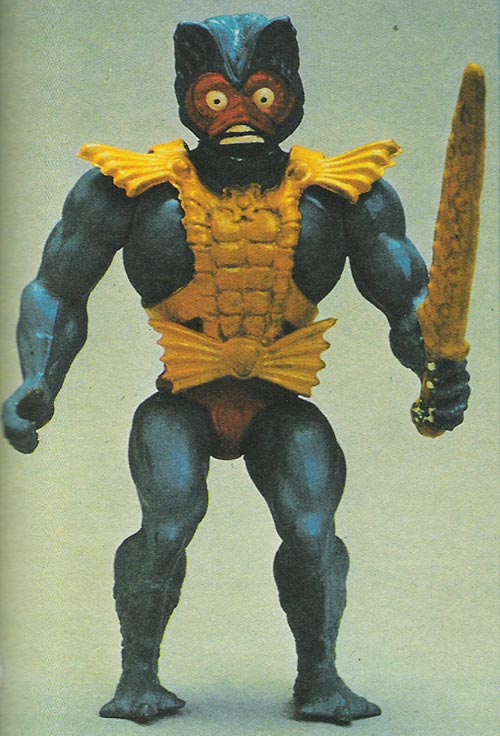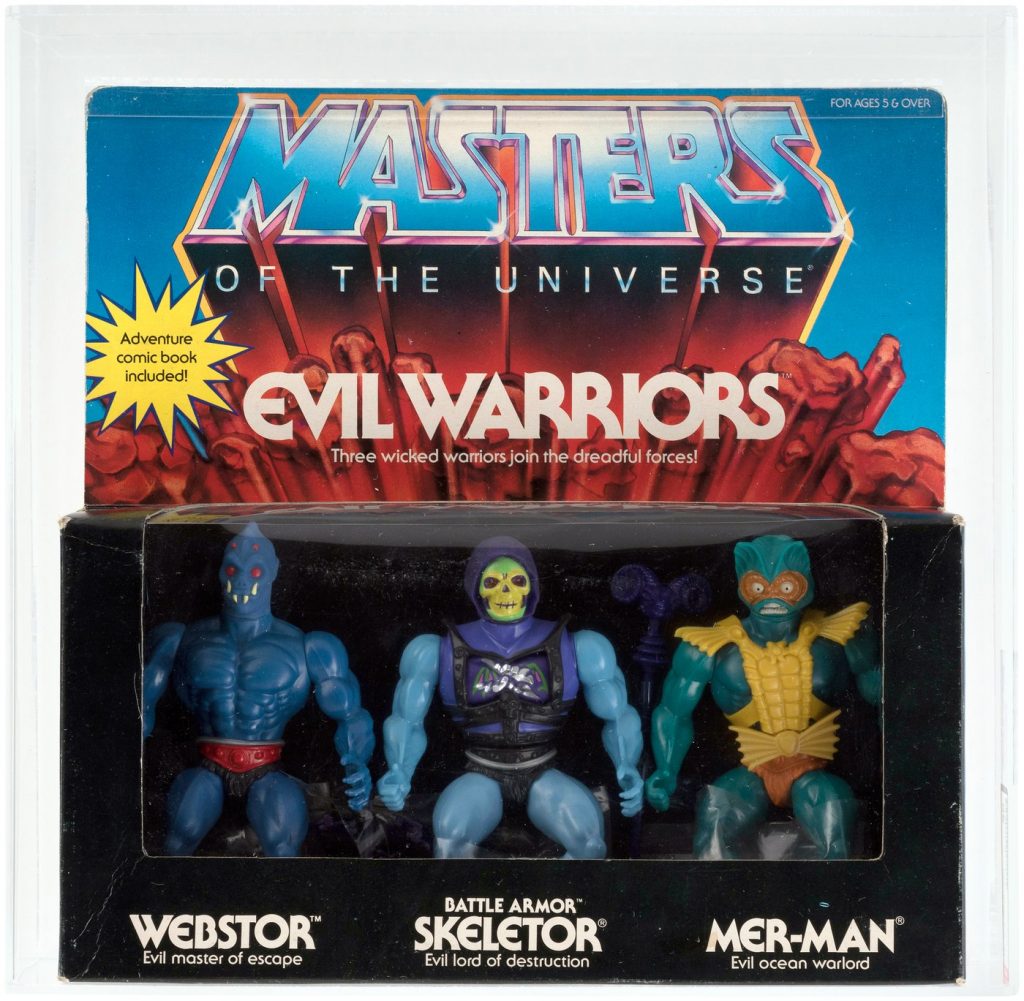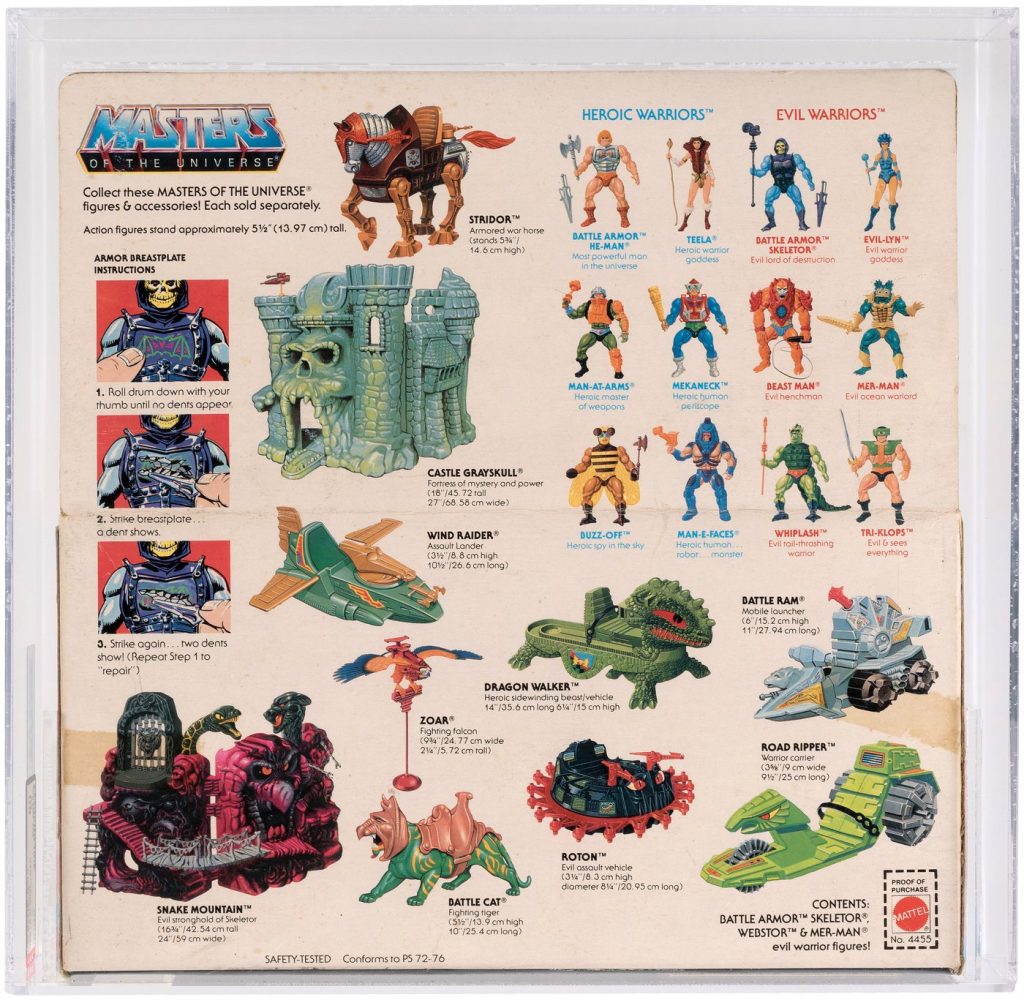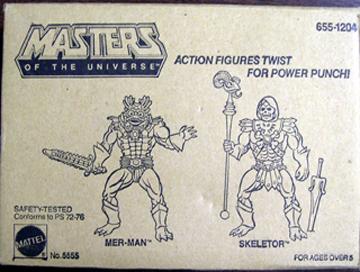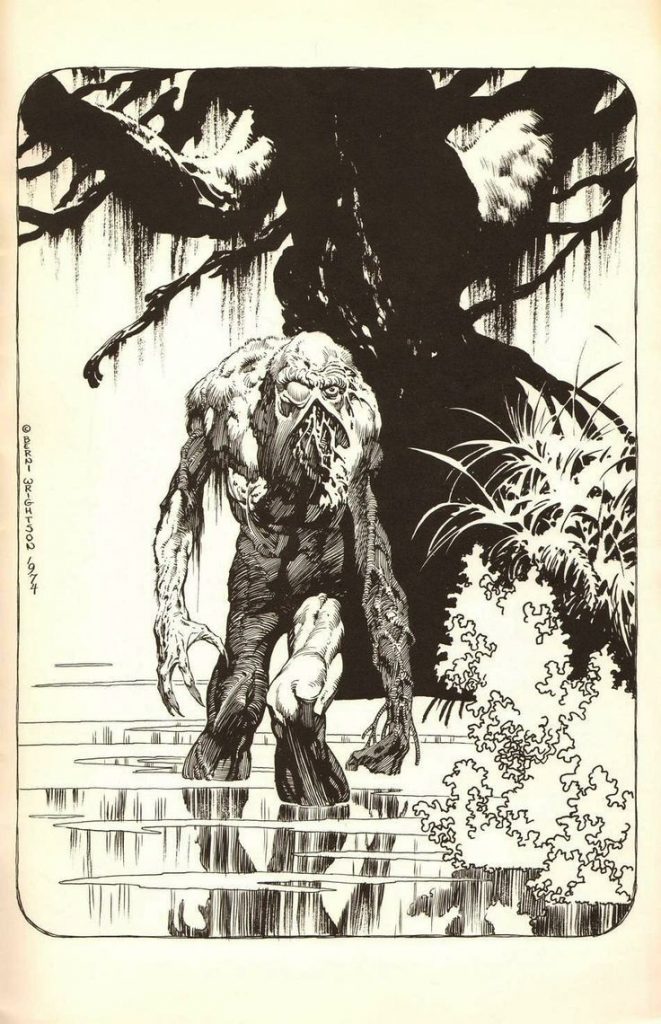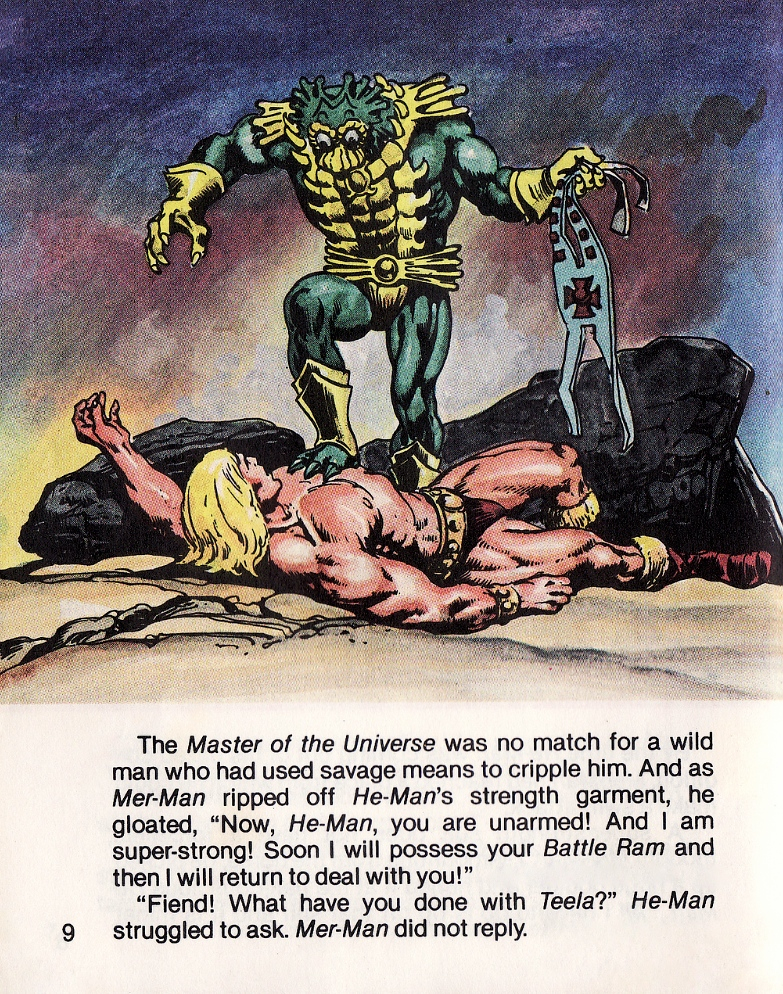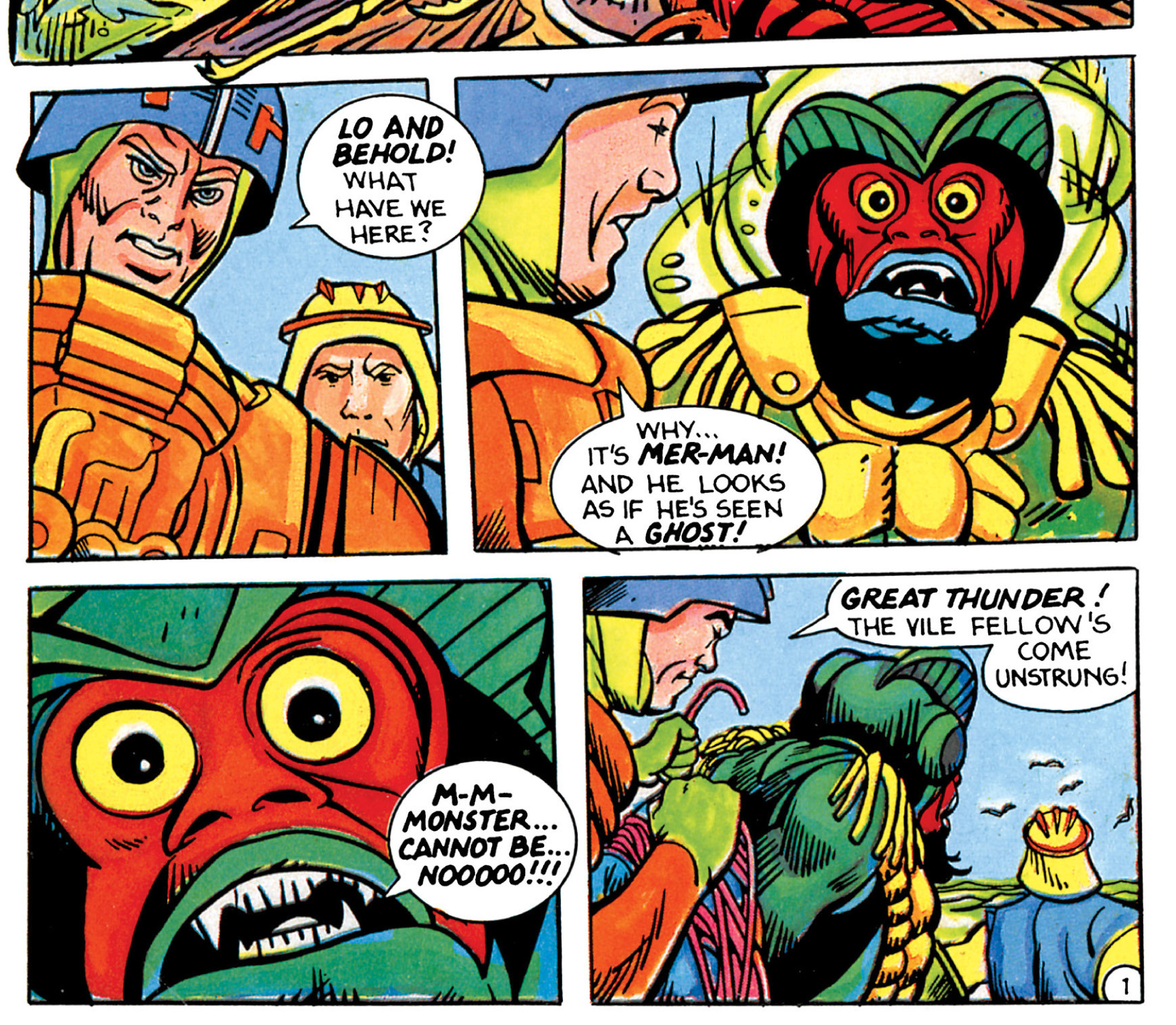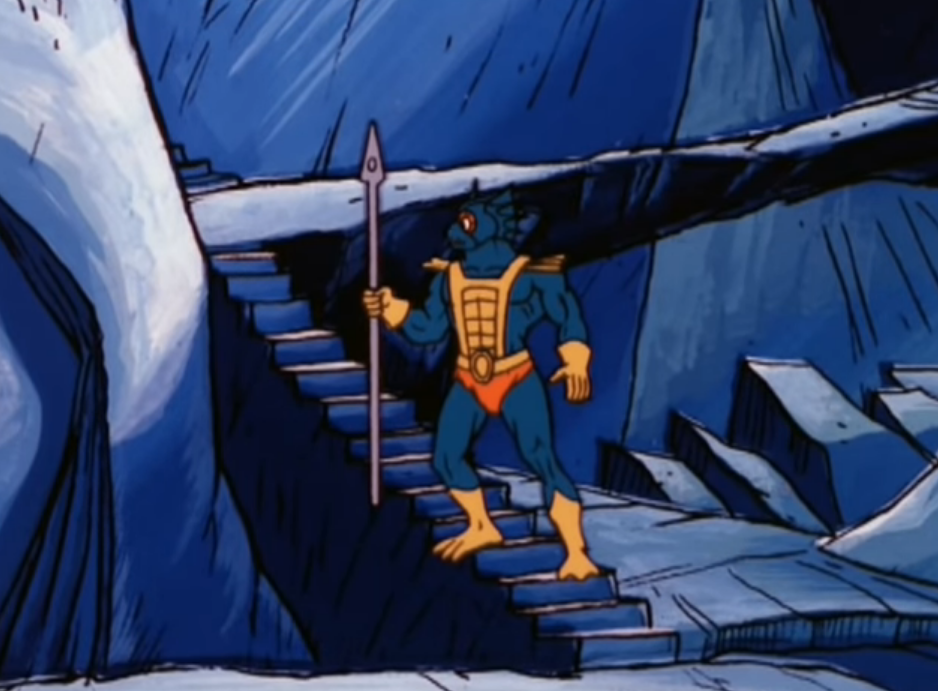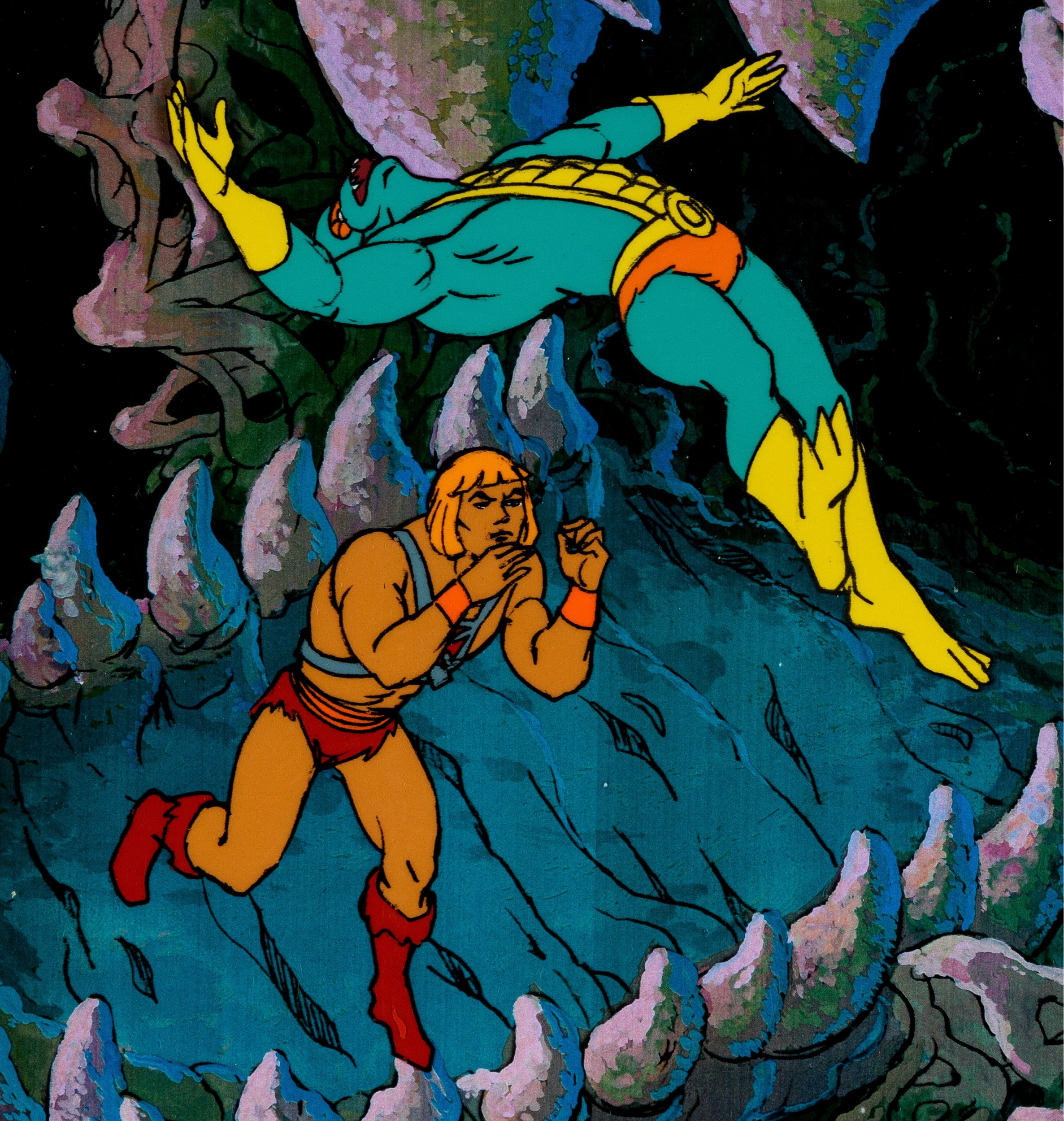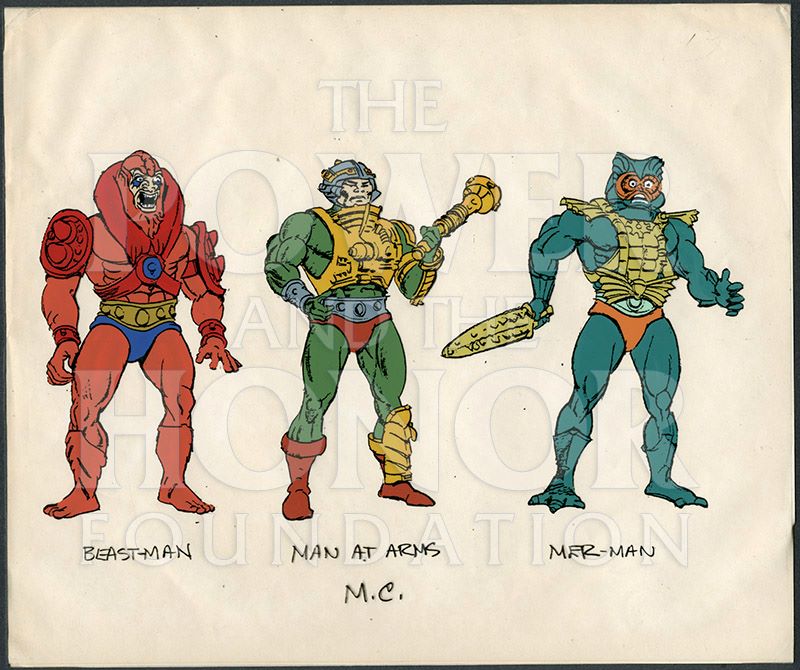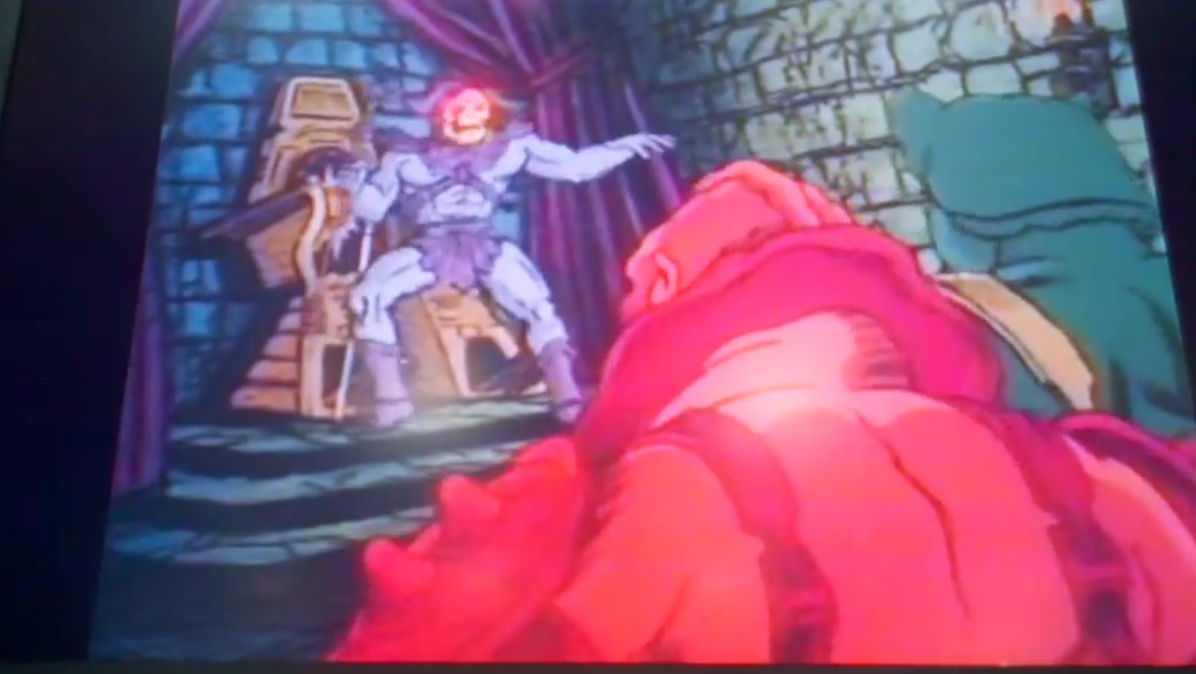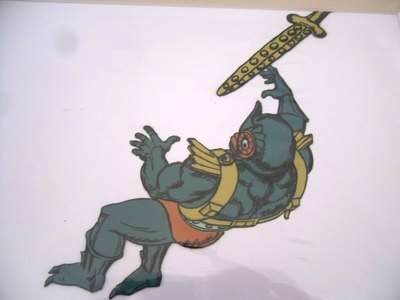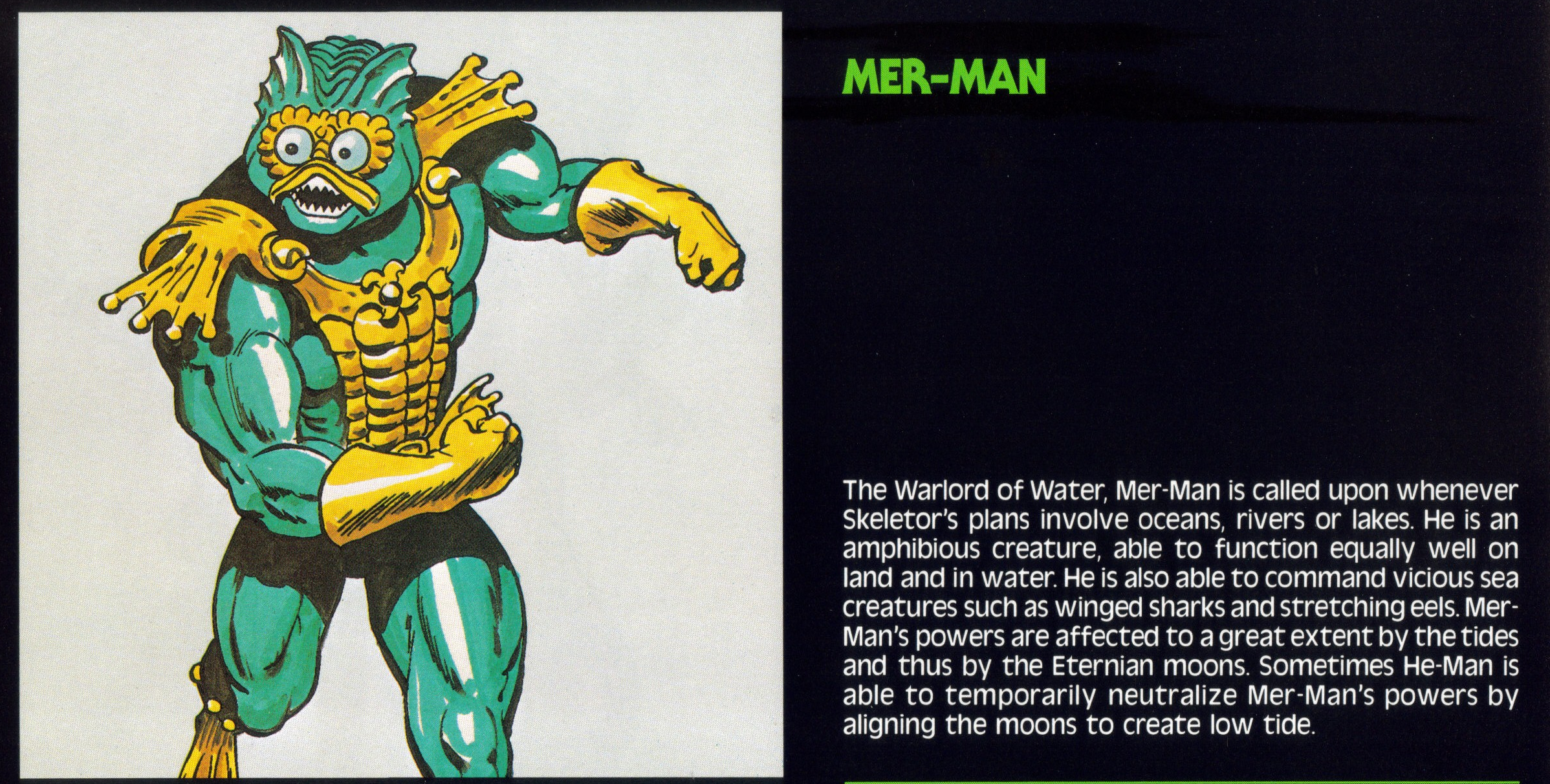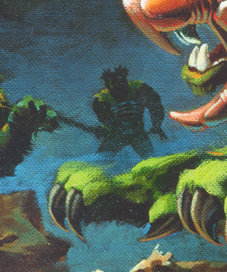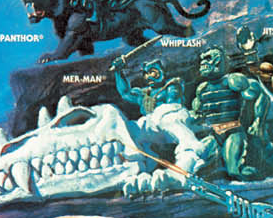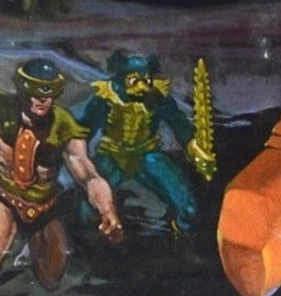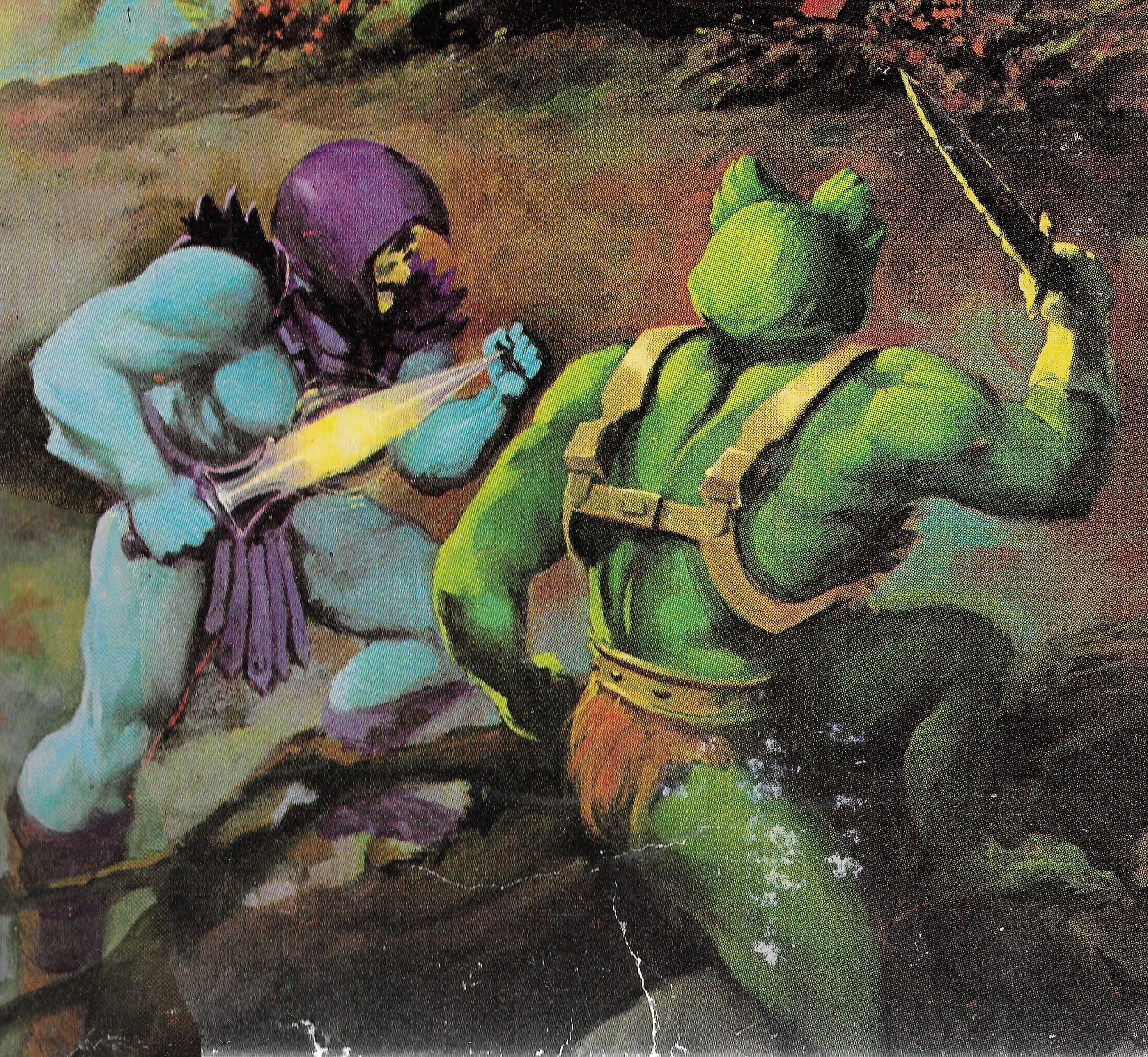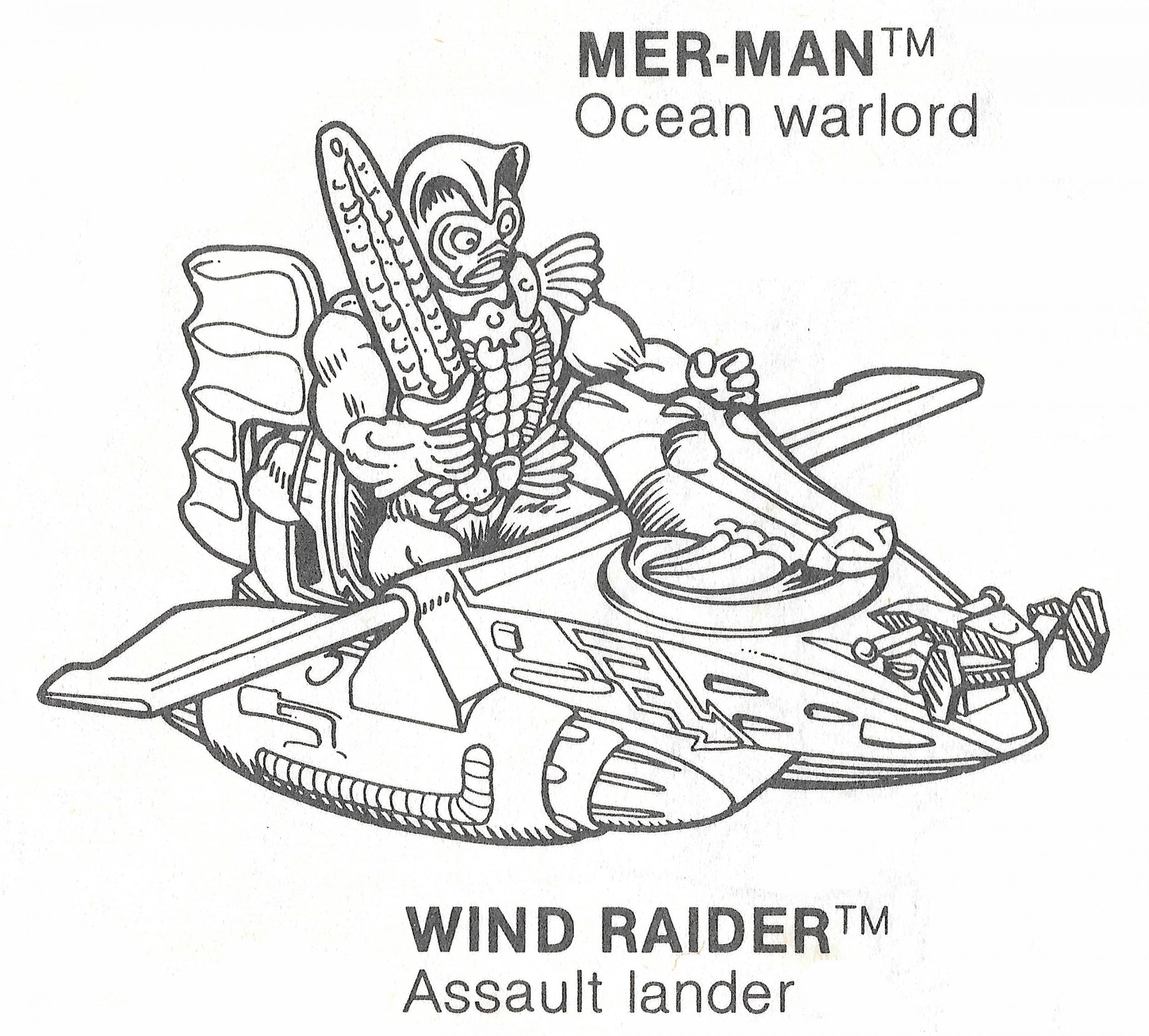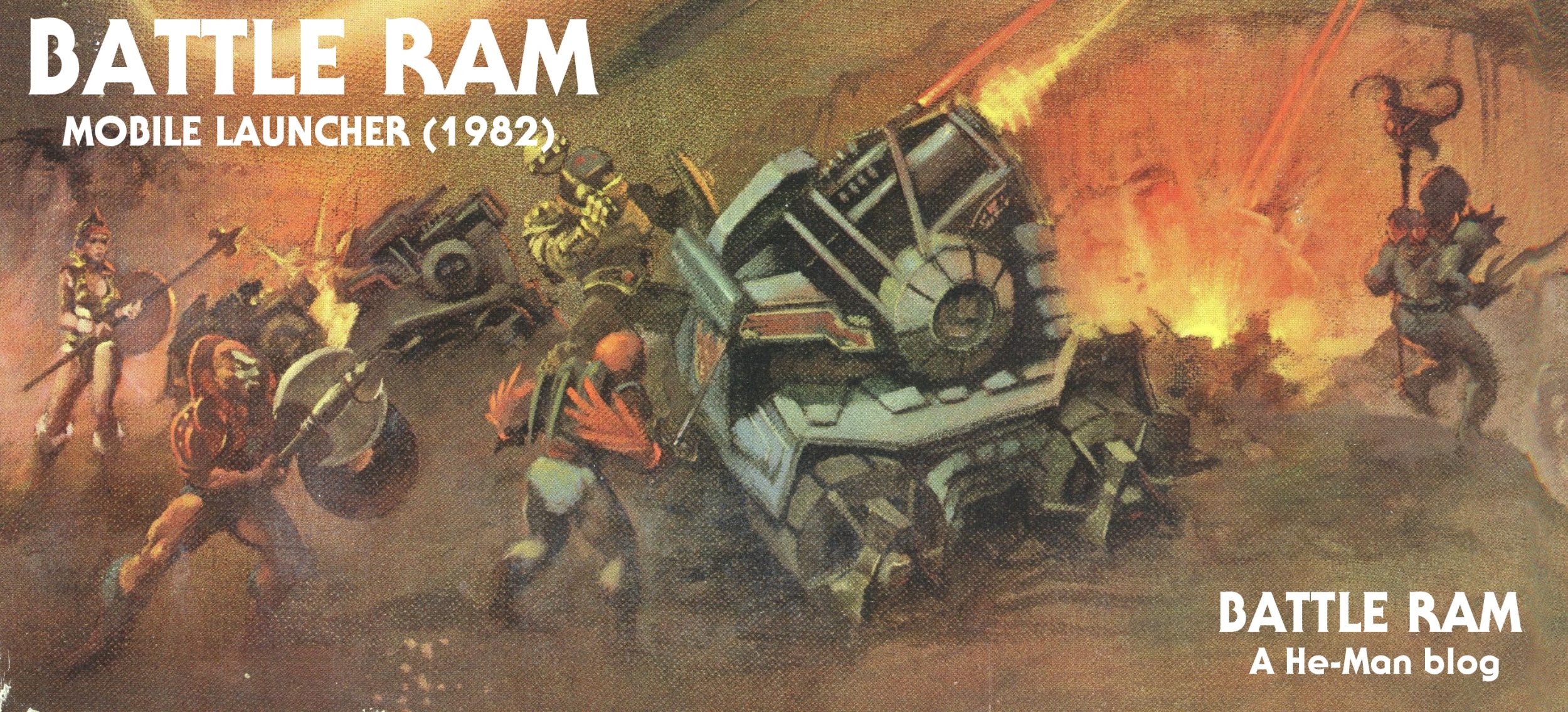
I was obsessed with the Battle Ram the moment I saw it on the shelf as a kid. Maybe that’s obvious from the name I chose for this blog. Unlike most of the other MOTU items I got as a kid, there was no window box or bubble in the packaging. The Rudy Obrero art sold the toy all by itself, and it was more than up to the task.
Box Art


To this day it remains my favorite piece of art ever produced for the Masters of the Universe line. Let’s take a closer look at the full painted scene:

Every piece Rudy Obrero did for Masters of the Universe was moody and full of movement and mystery (with the possible exception of the Attak Trak box art). This illustration, like the Wind Raider pieces he did the same year, features two separate action scenes. The bottom scene, which would have been facing front at about eye level for kids wandering the toy isles of Toys ‘R’ Us (or in my case, the White Elephant), depicts He-Man guiding the Battle Ram over difficult terrain as evil warriors rain down fire from above.
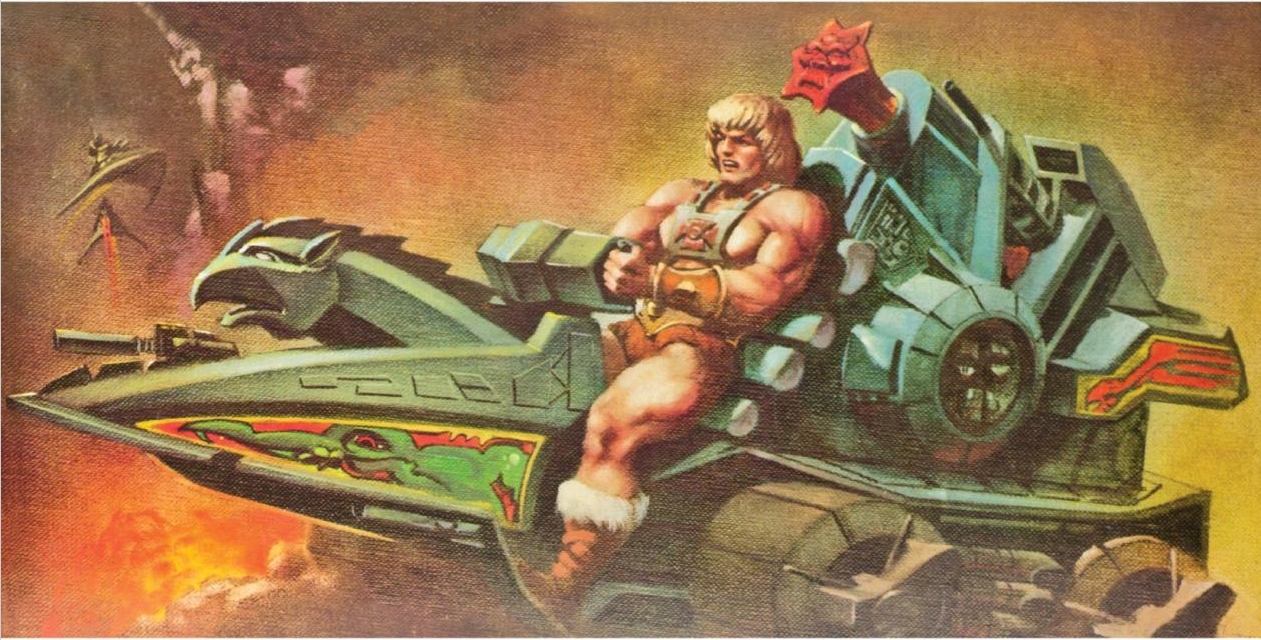
He-Man is shown here with white colored fur at the tops of his boots. Every time Obrero depicted He-Man, he had these boots (sometimes the fur is white, other times it’s more of an ocher color). They’re actually based on the prototype version of He-Man that Obrero used as a reference. The mass-produced toy had fully red boots.
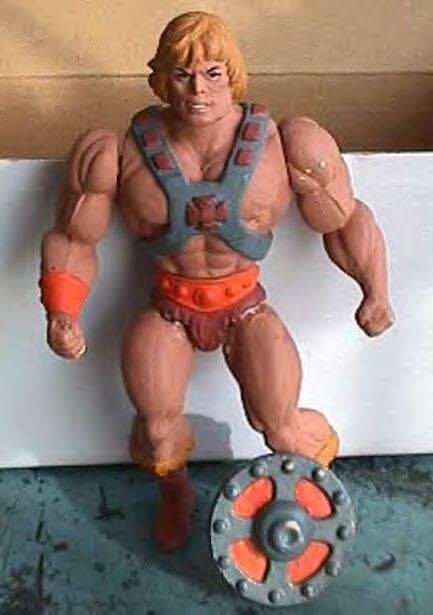
The top portion of the art was subdivided into two sections on the actual box. The top-most section was again facing front and featured He-Man shooting through the air on the front portion of the Battle Ram (aka the Sky Sled). Evil versions of the Sky Sled (which also appear in the Castle Grayskull box art) send out twin laser blasts while a fierce battle rages below.

The middle section faces up rather than forward due to the shape of the box. Several back halves of Battle Rams are launching missiles. Skeletor, Beast Man, Stratos, Man-at-Arms and Teela (sporting her concept spear that never appeared in the vintage toy line) are seen, along side a warrior with a horned helmet and Castle Grayskull in the background. It looks like all-out war.
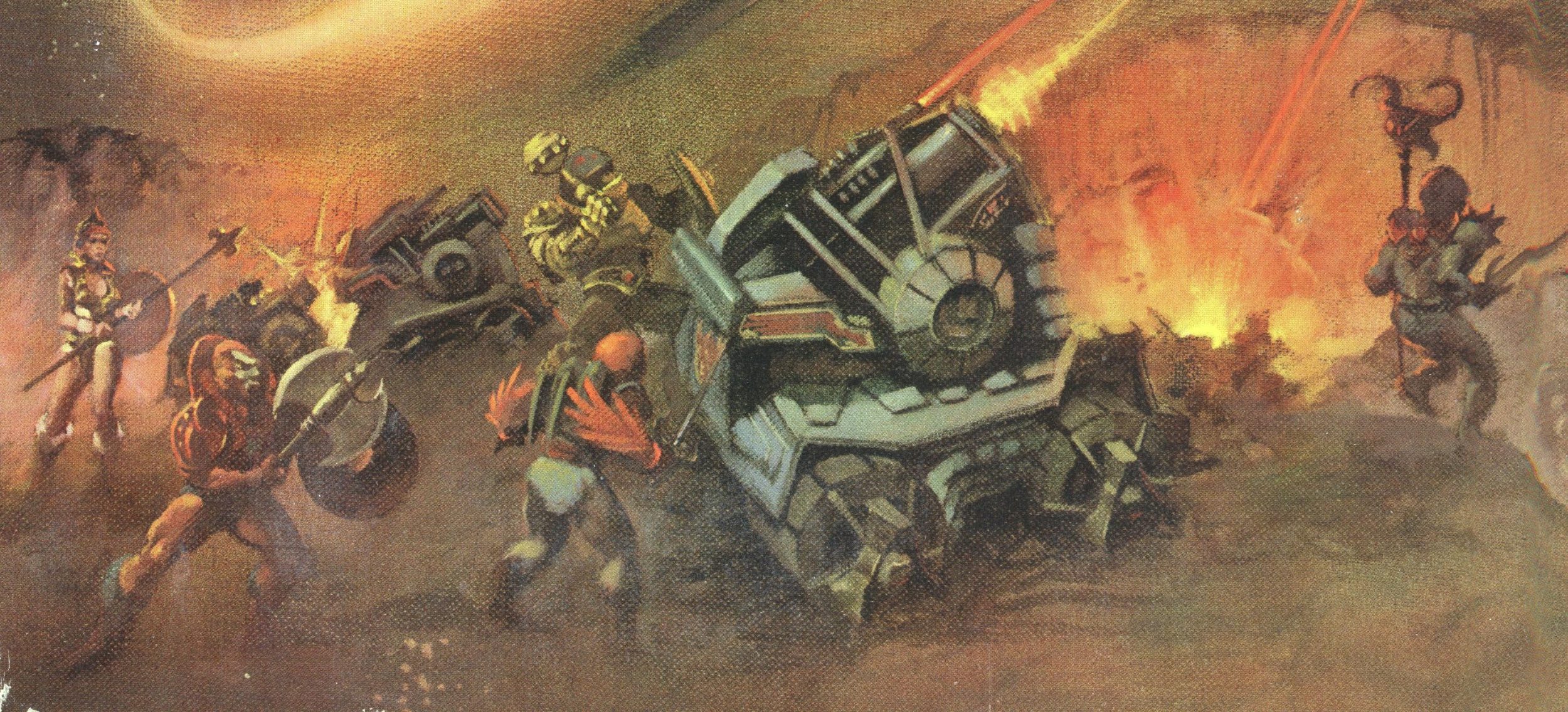
As a kid, I was instantly hooked. I had never seen anything like it. As I said, Obrero’s artwork (done in oil) really sold this vehicle. It didn’t hurt that the artist tended to add extra details, like a protruding jet engine on the back of the Sky Sled and under-guns that the actual toy only hinted at (but were actually present in the prototype version).
A modified version of the artwork appeared in the Japanese Takara toy catalog. It looks like a cross between the Battle Ram box art and the Power of Point Dread comic book cover:

Yet another modification to the artwork was done on the Brazilian Estrela version of the Battle Ram. They even modified the cross sell art on the back of the package. It’s unclear to me why this was done. My speculation is that they had the rights to produce and sell the toys, but opted not to purchase rights to the packaging artwork.





Update: Mano from Mundo Masters shares this example of the Congost/Mattel Spain box, which uses the original Rudy Obrero artwork:

A Swedish language advertisement took elements of the Rudy Obrero Battle Ram artwork and modified it to advertise a number of MOTU vehicles:
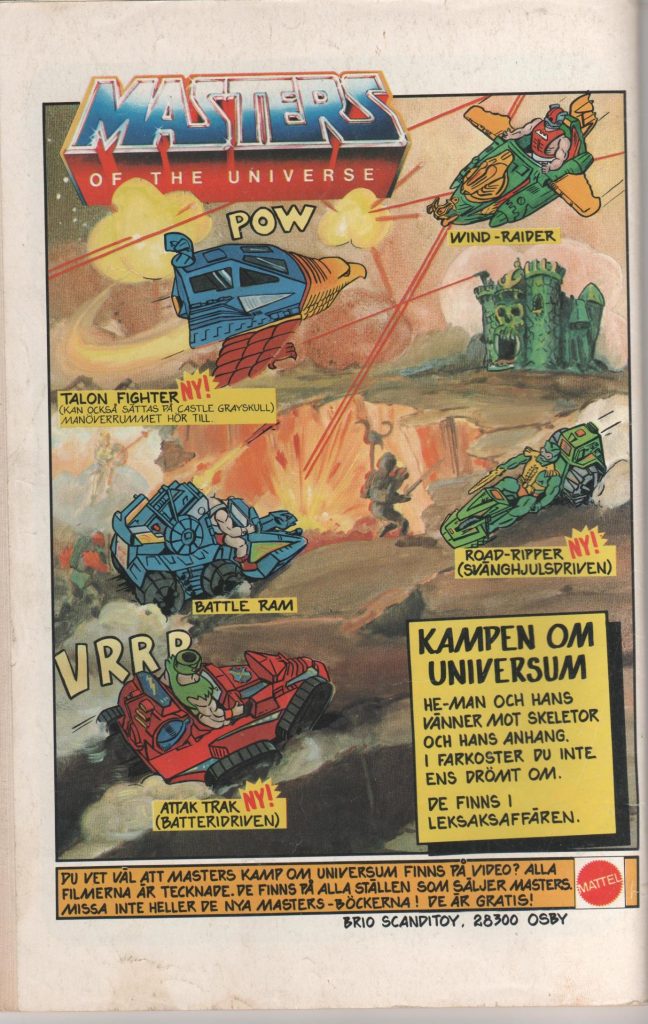
Design & Development
The toy was designed by Ted Mayer, who also designed the iconic Wind Raider, Attak Trak, Eternia, Slime Pit, and quite a few figures that came out between 1985 and 1987. Let’s take a look at some of the artwork and prototypes leading up to the creation of the Battle Ram.
Before Ted was brought in, Mark Taylor (who designed all of the early figures as well as Castle Grayskull) tried his hand at designing the vehicles as well. An early vehicle concept was a three wheeled battle chariot. It bears little resemblance to the Battle Ram, except for the design of its back wheels:
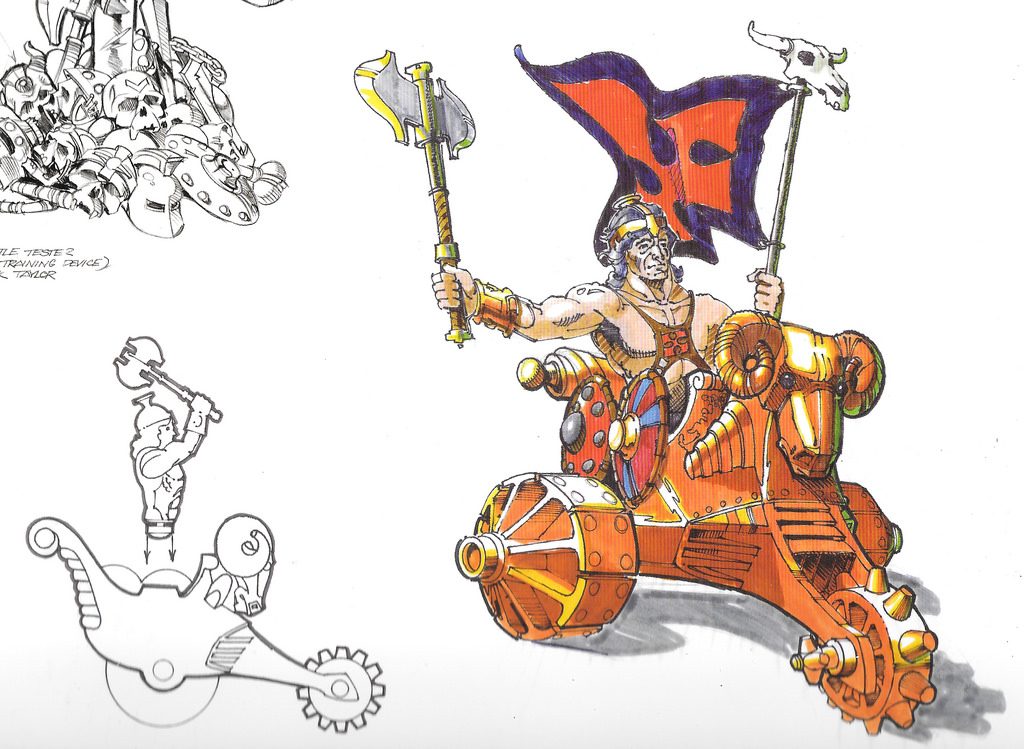
Mark also created another vehicle design called the Battle Catapult. Again, not much resemblance to the Battle Ram, other than the wheels, color scheme, as well as the bird sticker on the side, which designer Ted Mayer would incorporate into some of his early Battle Ram concept art. In early minicomic line art by Alfredo Alcala, this vehicle was depicted, but it was later replaced by the Battle Ram in the final colorized artwork.
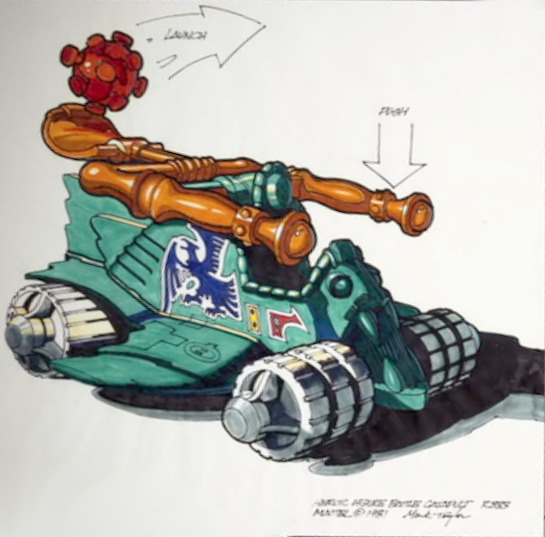
Image Source: Power of Grayskull documentary. Added 08/28/18
The image below is an early Battle Ram concept by Ted Mayer. Notice that the vehicle has six wheels (four within tank treads) and no figurehead on the front. It does include the bird decal from the Battle Catapult concept:
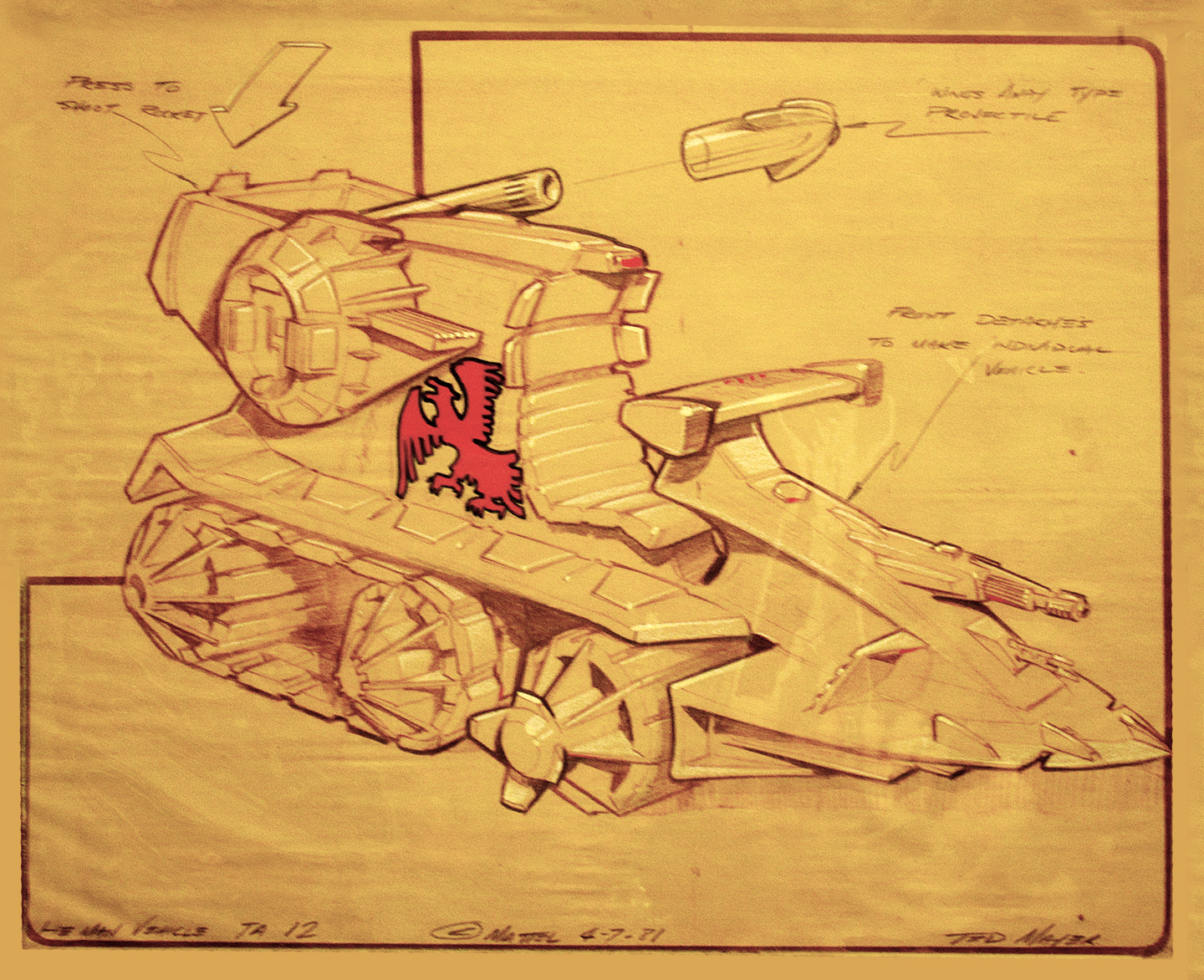
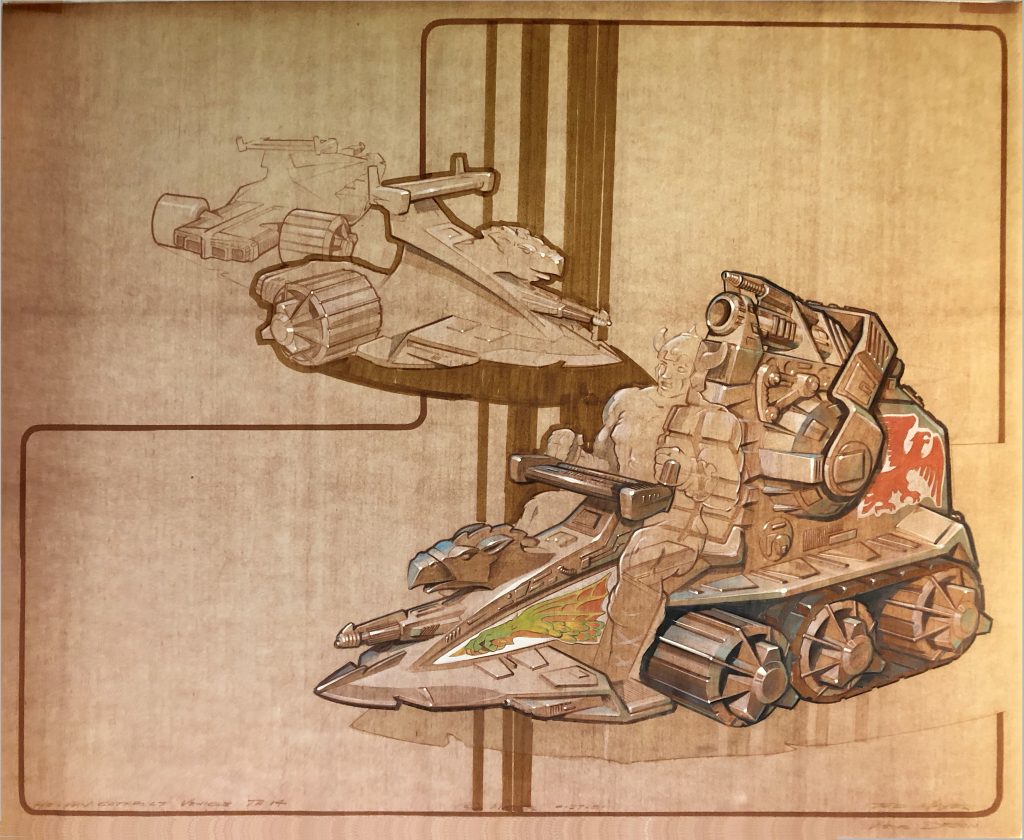
The first two of the above concept drawings are recognizable as ancestors in the Battle Ram family tree. There are several differences from the final toy, of course. In both images, the Battle Ram had six wheels, four of them set with tank treads. The first image features a Recaro-type seat and lacks the gargoyle figurehead in the front. The second version has the familiar gargoyle figure head. However it’s clear from the background image that the idea was for the front wheels to detach along with the front section. At this point the Battle Ram had no flight capabilities. According to Ted Mayer, there would have been an additional wheel under the nose of the vehicle to allow it to roll freely, separate from the back half.
The drawing below is actually a separate vehicle concept, called Battle Chariot, and actually appeared in the first MOTU mini comic, He-Man and the Power Sword, along side the front half of the Battle Ram:

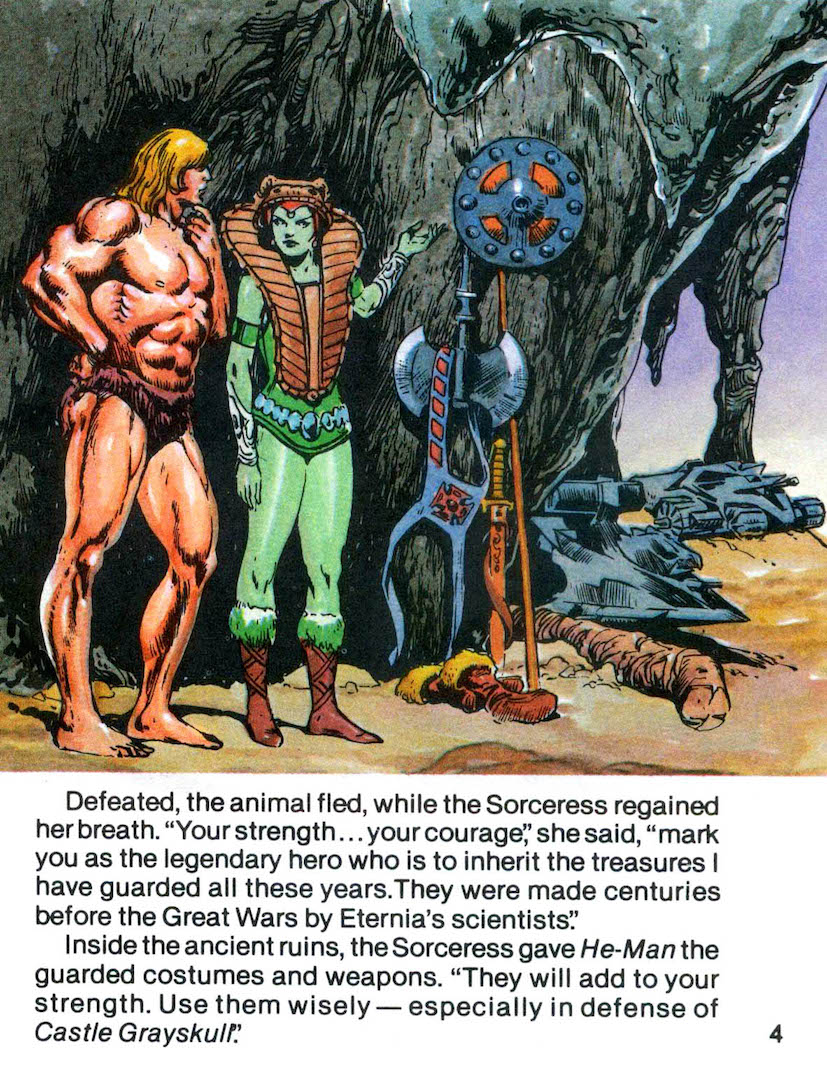
Ted says he was influenced by hot rod and WWII aircraft design, and you can certainly see those elements in in the form of exhaust pipes and nose art.
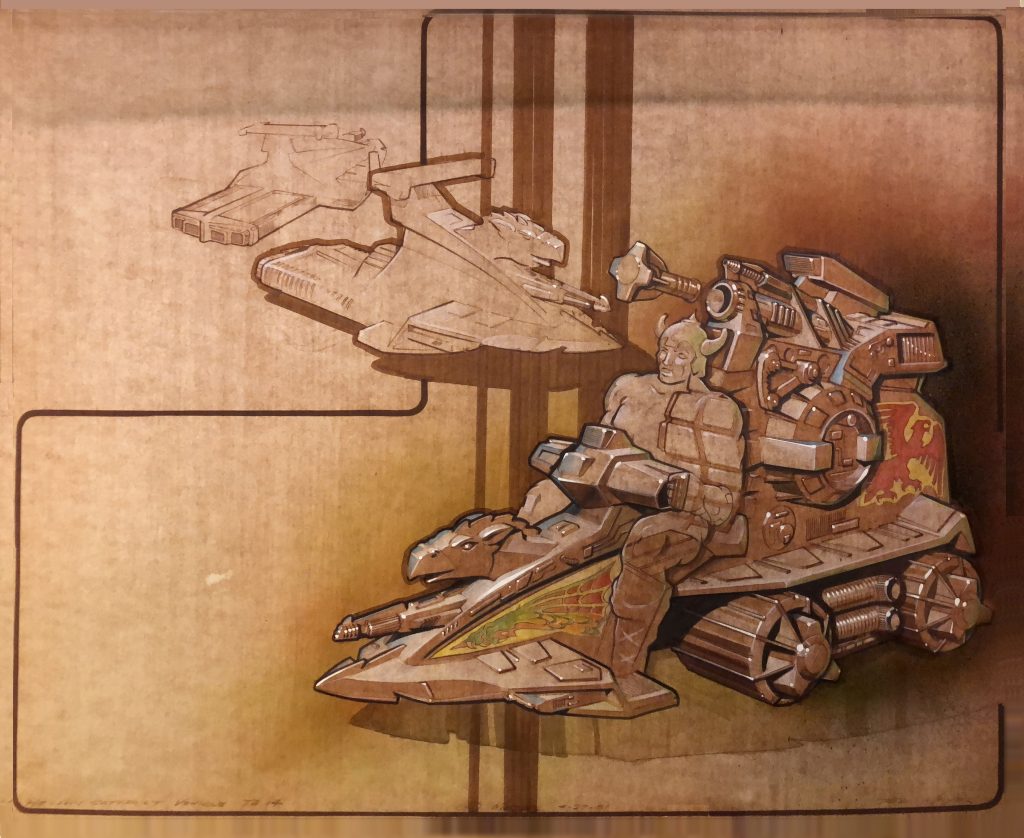
The above concept drawing shows the Battle Ram (featuring He-Man in a helmet, which he had in most early concepts) looking much closer to the final vehicle. At this point it has only four wheels, and the detachable front section has been re-envisioned as a flying vehicle.
The prototype (sculpted by Jim Openshaw) is a bit more detailed in places than the toy was. The guns on the front section are certainly more detailed and distinct. The stickers are also different (there is a skull on the back of the vehicle rather than the masked face image), and the rocket is missing its gargoyle face. The expanded horizontal “handle” area in the very back of the vehicle is also missing from this prototype:

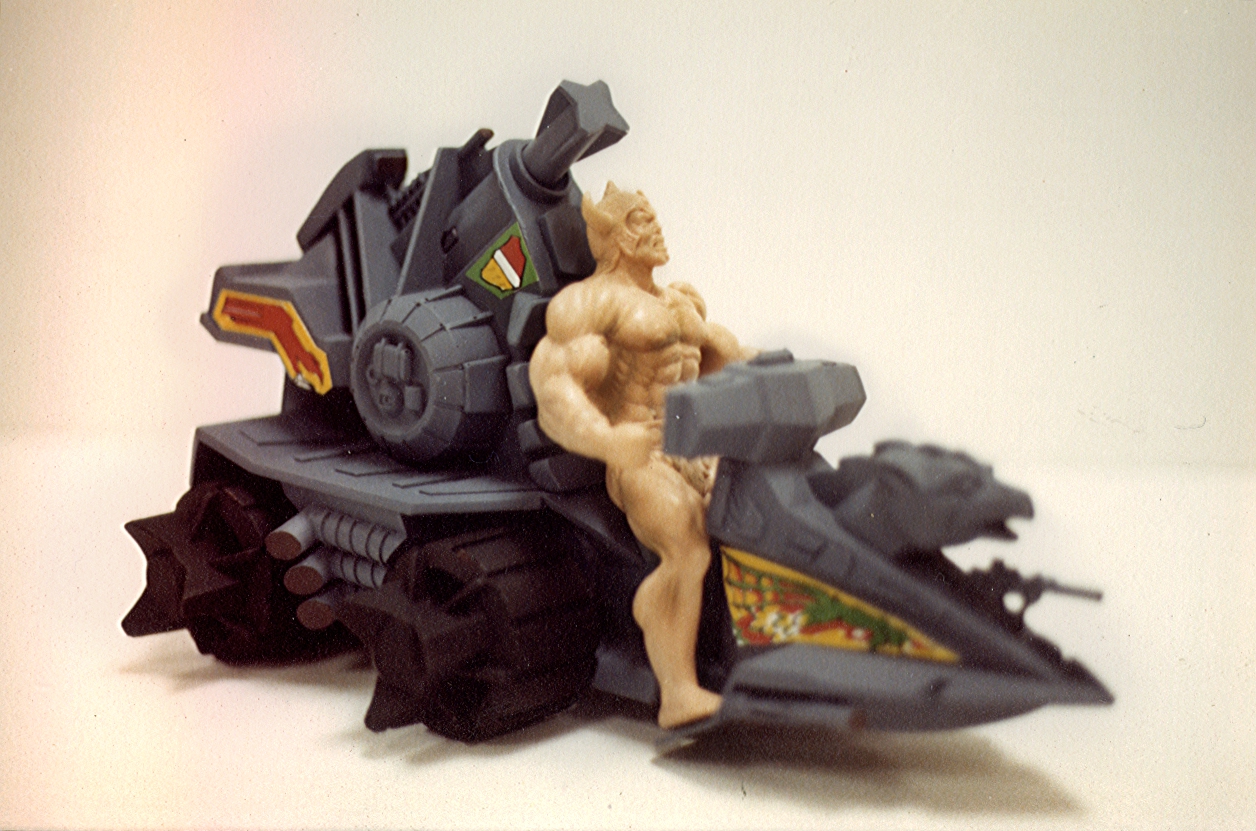
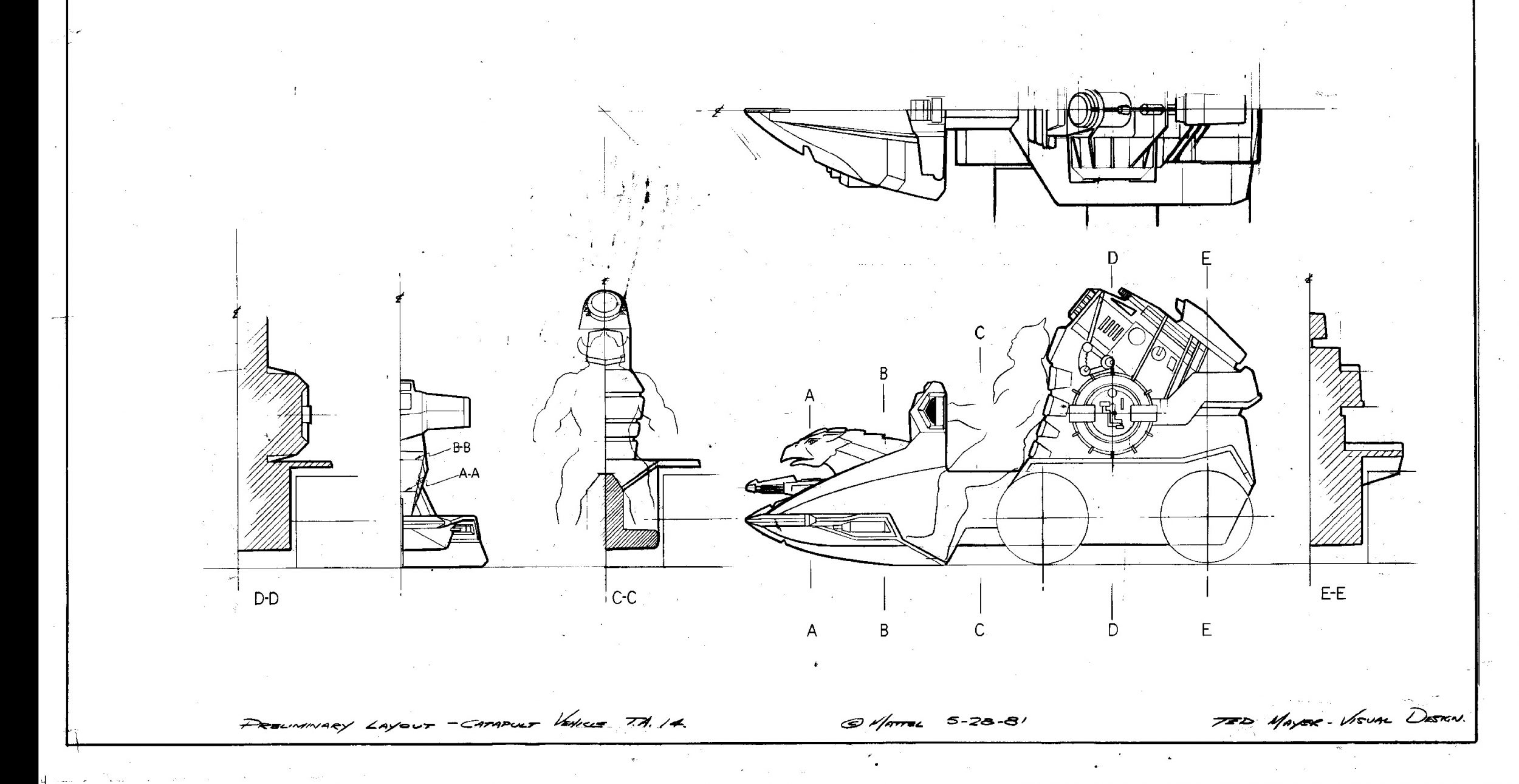
Production Vehicle
Let’s take a closer look at the final toy:
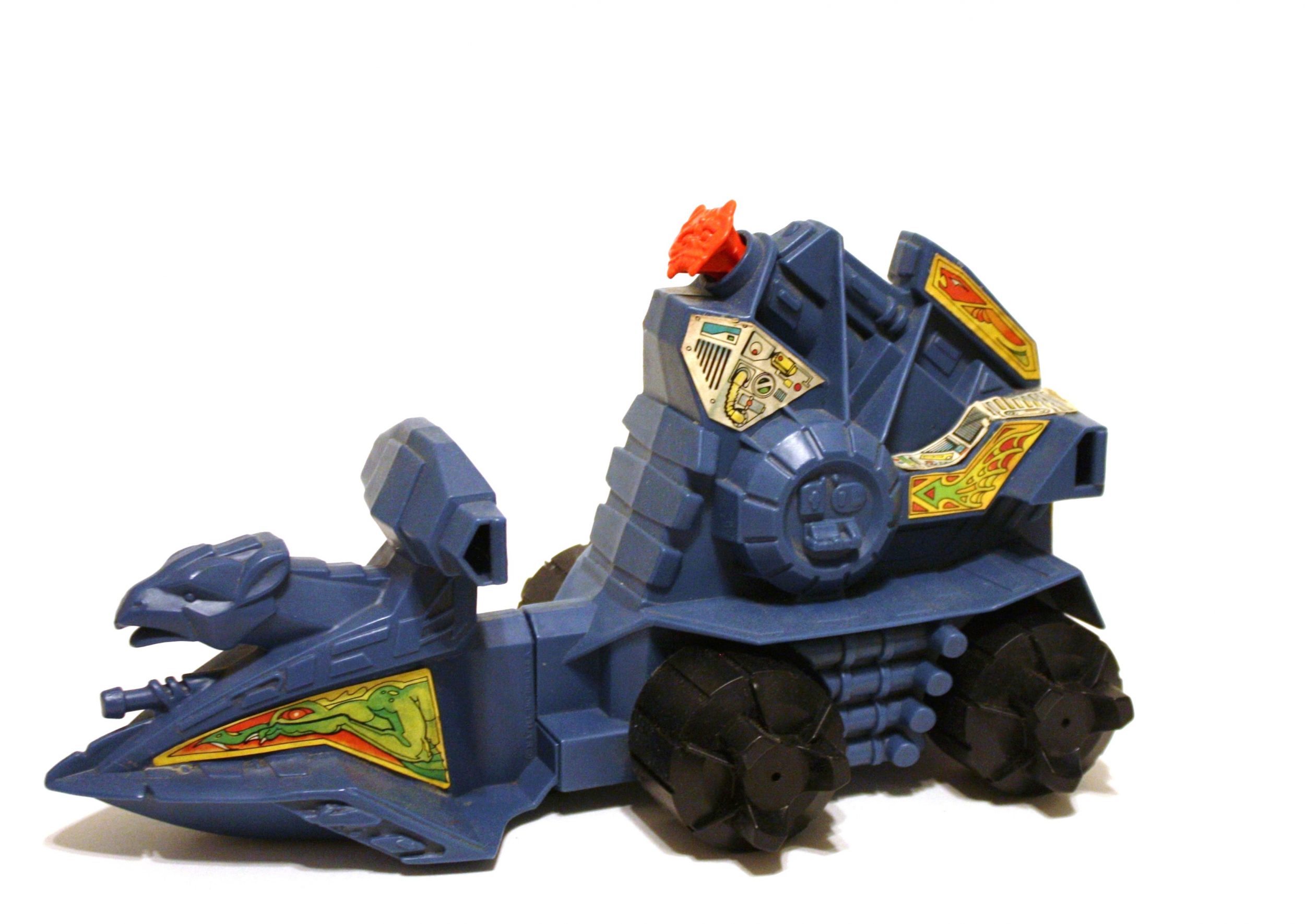


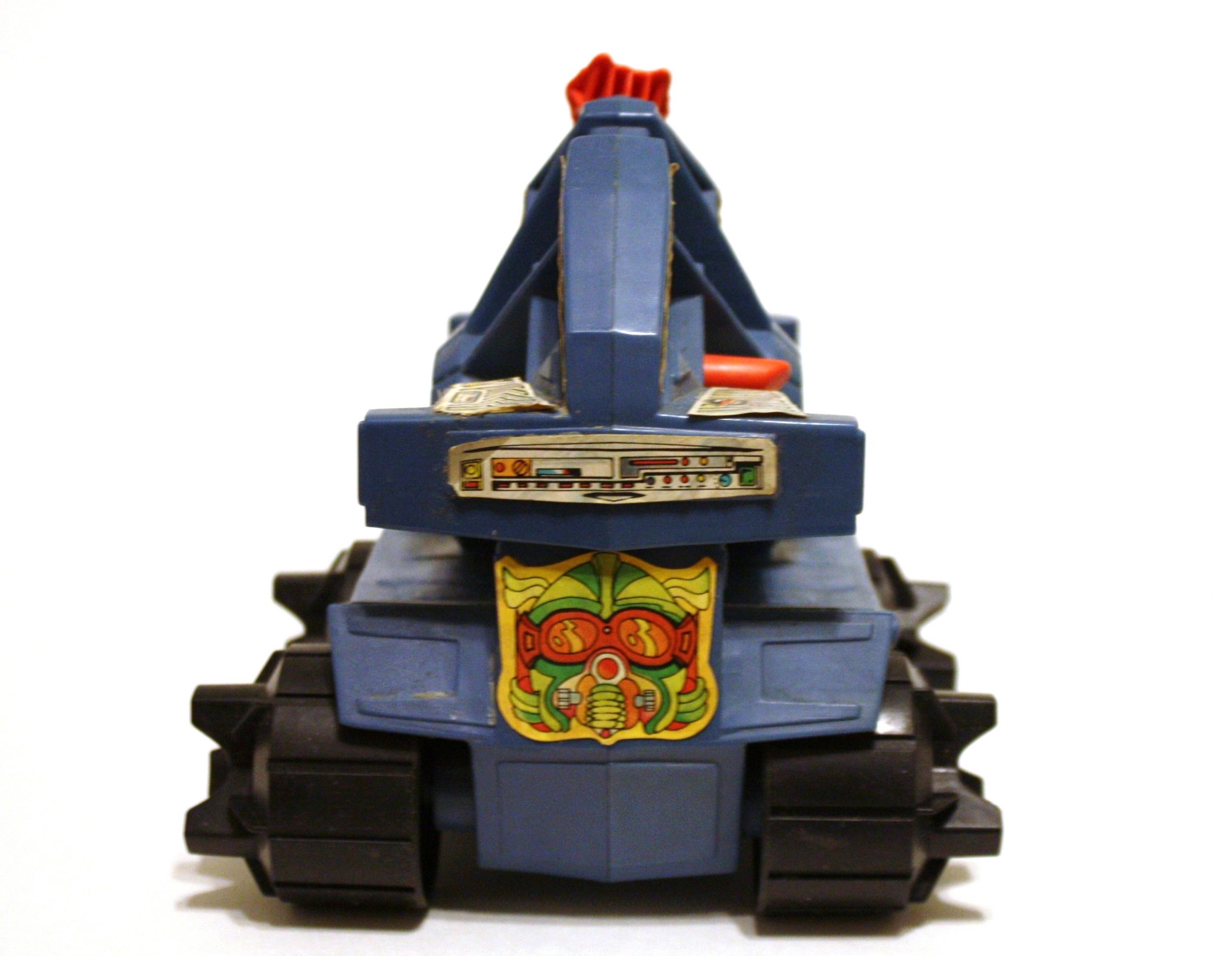

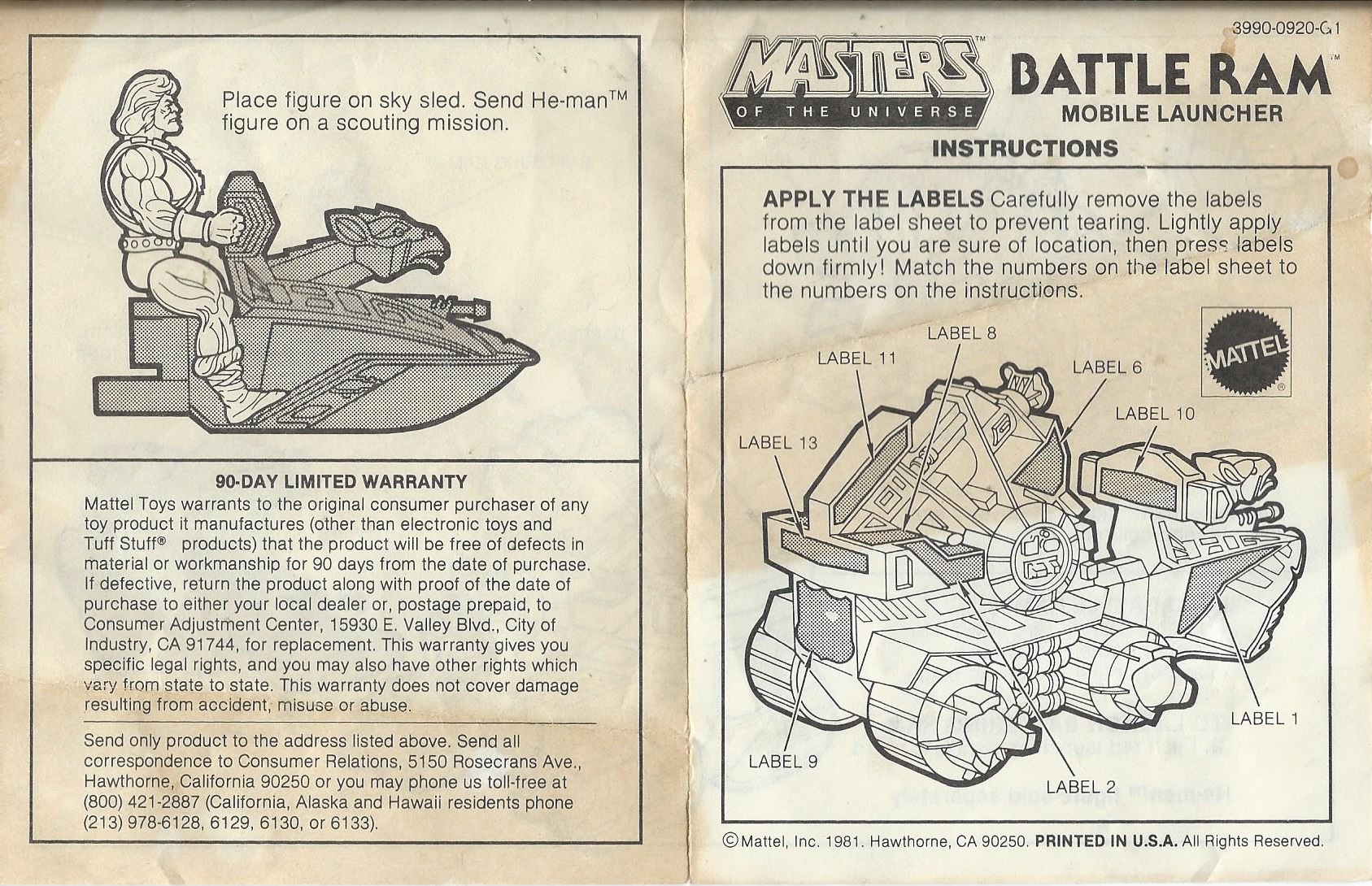


As suggested by the packaging artwork and concept drawings, the front half of the production toy detaches from the main vehicle, and is something of a flying WaveRunner. I’m not sure if a toy vehicle had come out before with that concept, but as a five year old I’d never seen anything like it, and it added a tremendous amount of play value. The back half features a spring loaded rocket launcher with a red firing mechanism. The rockets themselves (called battering rams on the packaging) came with sculpted gargoyle faces. The wide profile of the rockets was designed to help prevent accidental choking.
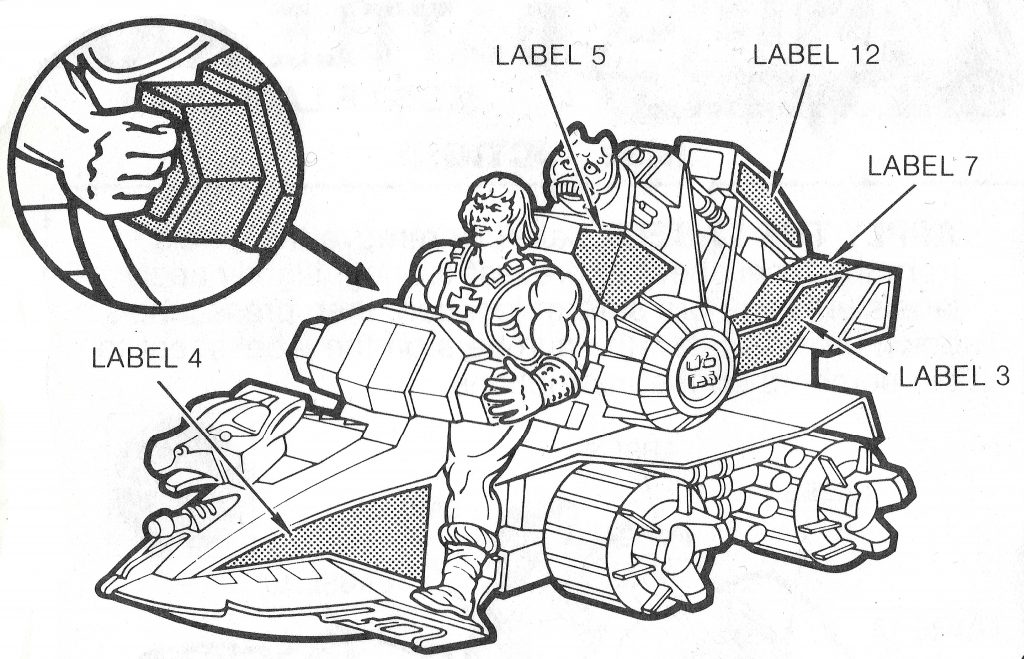

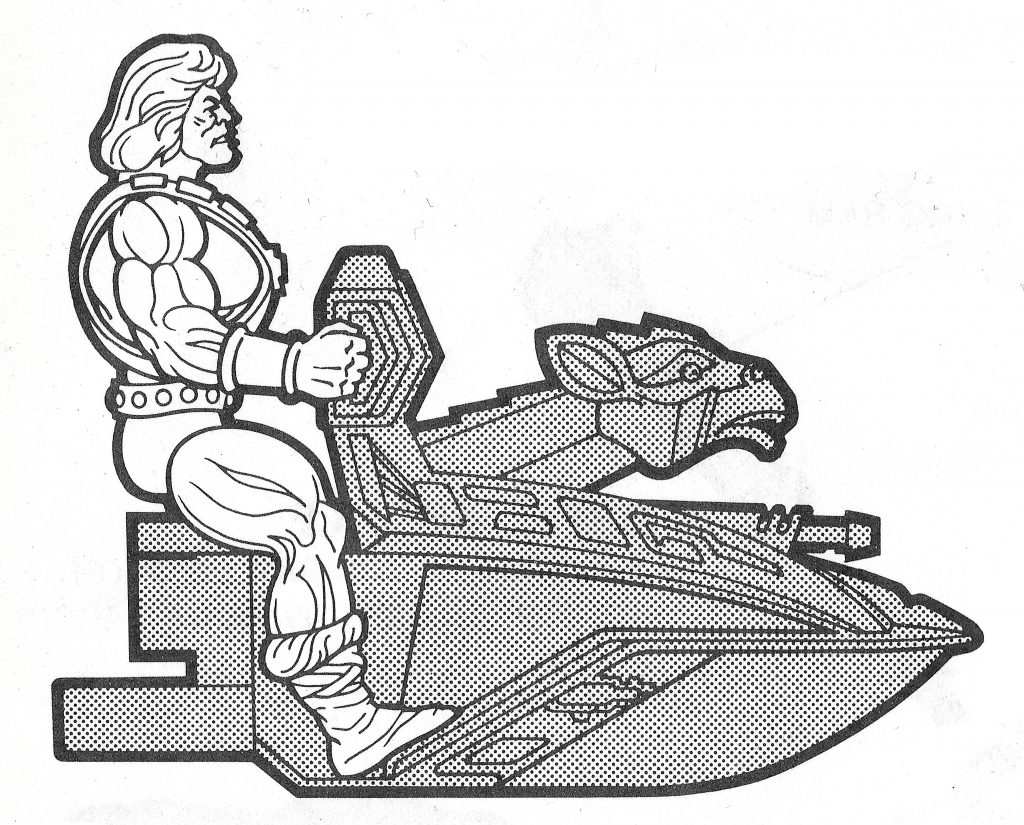
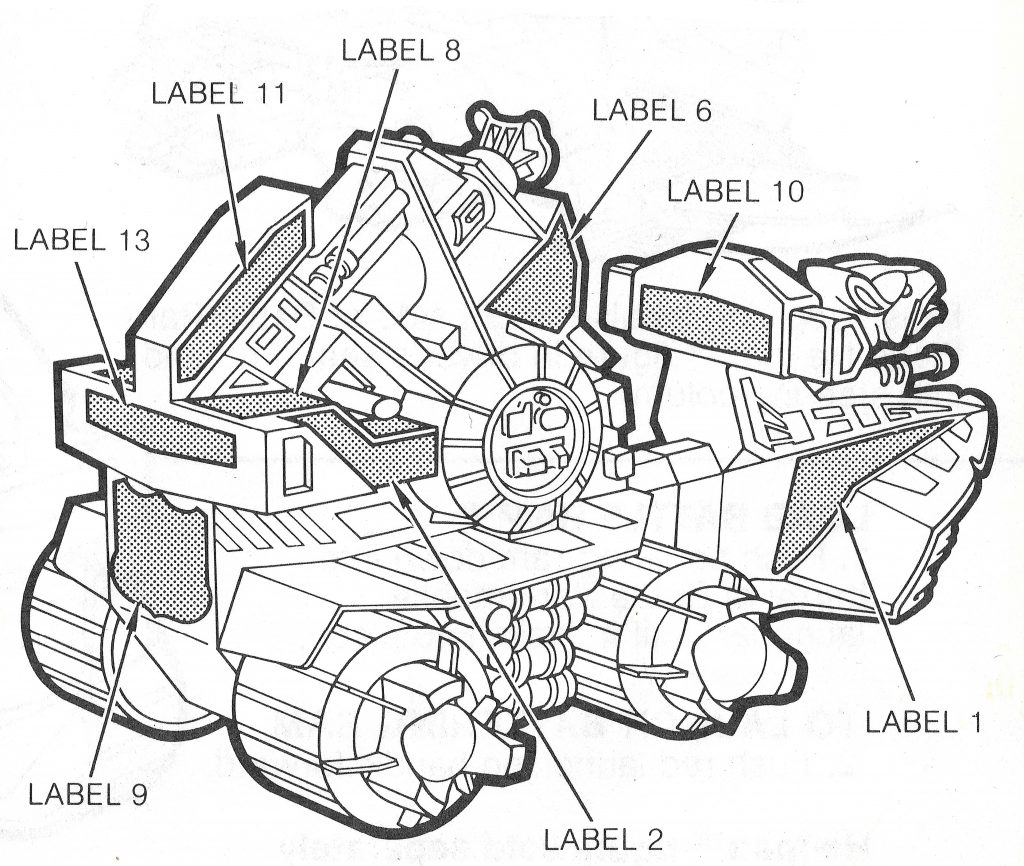
In the original concept, the front half wasn’t actually supposed to be able to fly very high through the air. It was supposed to hover close to the ground, which is apparent in both the minicomic, He-man and the Power Sword and in the description in the 1984 UK Annual:


A griffin face adorned the front of the vehicle. The back also featured an image of a masked face. The labels were created by Rebecca Salari Taylor, who also did the labels for Castle Grayskull and Wind Raider:

The Battle Ram is the first and best example of what made Masters of the Universe vehicles so great. They were a marriage of Gothic aesthetics with futuristic tech, relics in the MOTU universe of a bygone age of mass-produced technological wonders.
Battle Ram in Action
Øyvind Meisfjord contributed the image below as well as some videos of the Battle Ram in action:
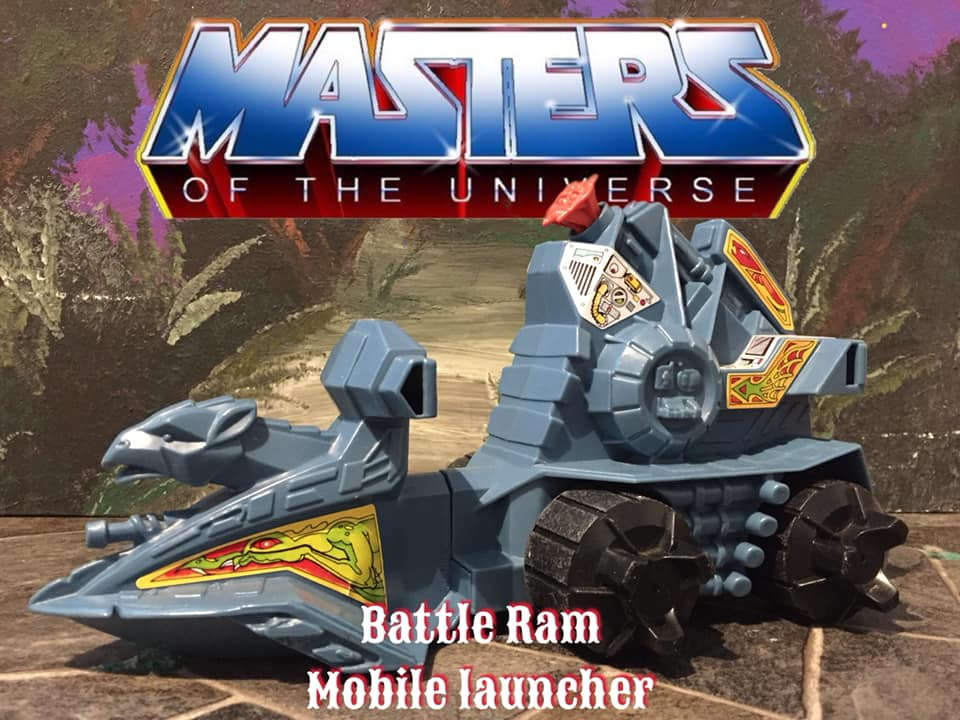
Marketing
The Battle Ram was heavily promoted in catalogs and marketing materials:
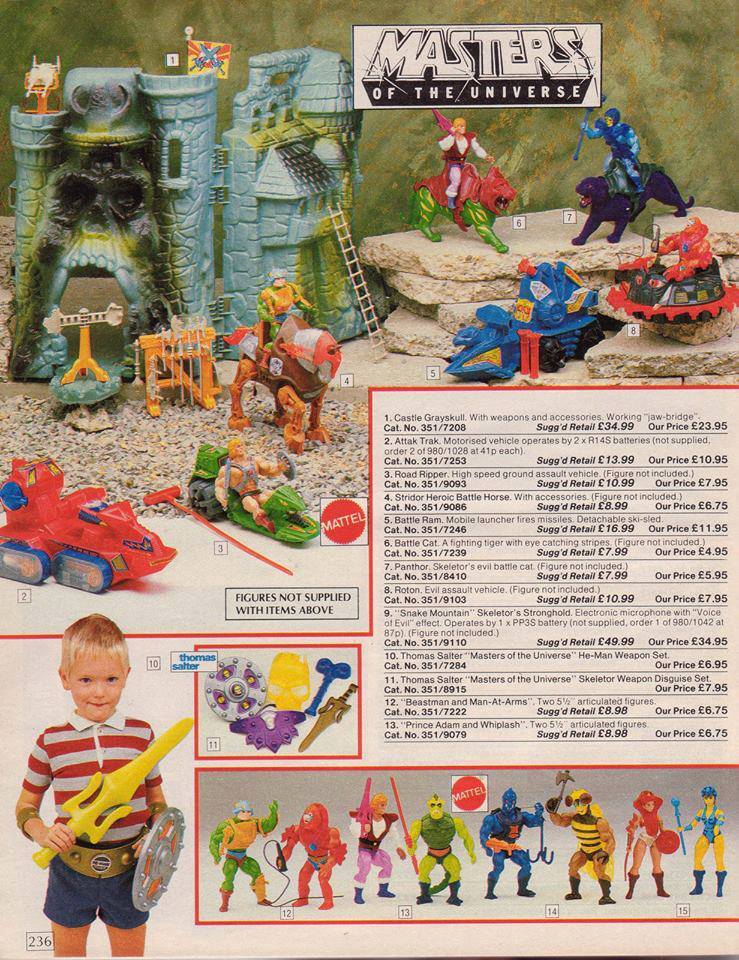
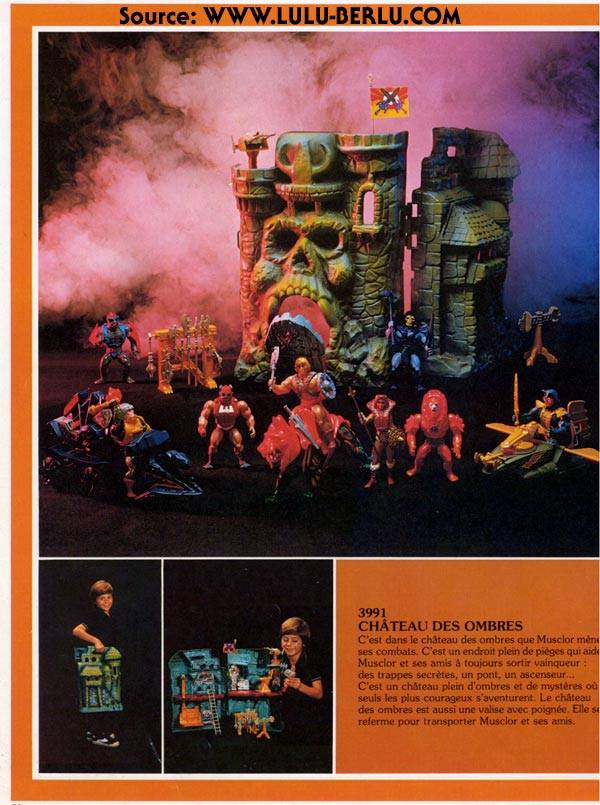

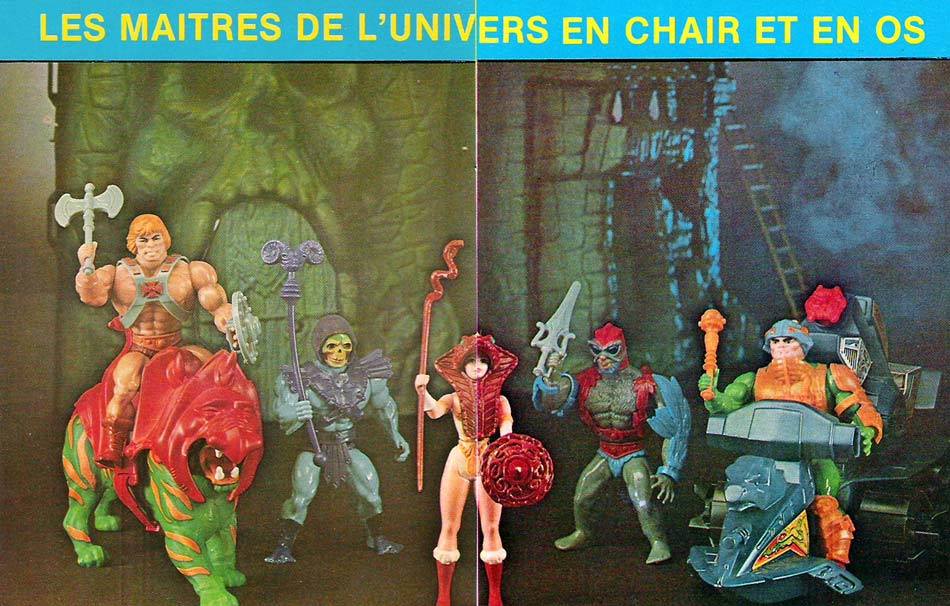





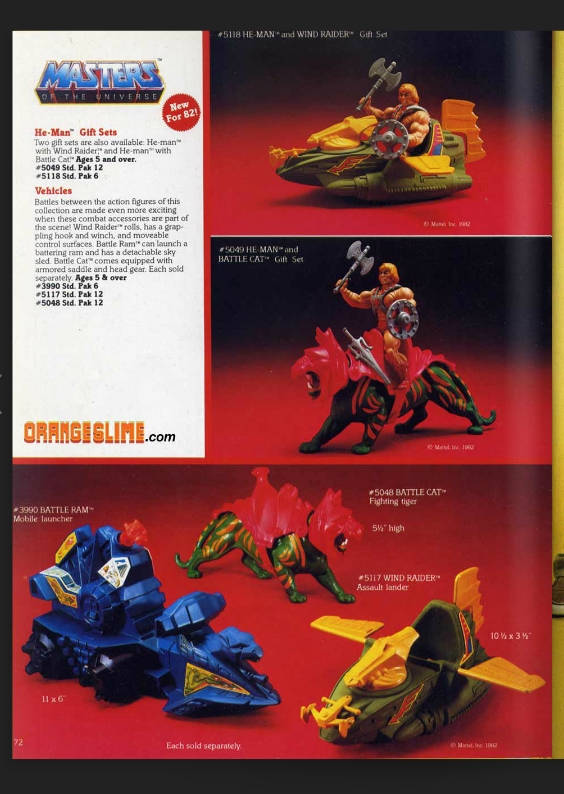

Minicomics
It also made several appearances in the first few mini comics (along with that unproduced Ted Mayer concept discussed earlier):




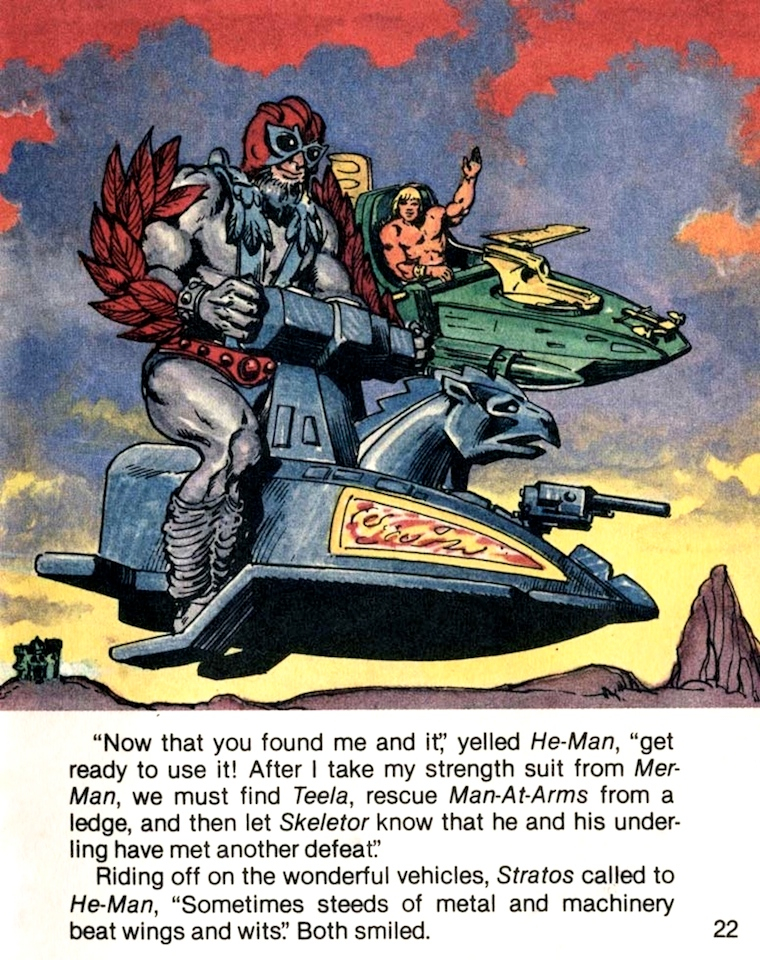

Other Appearances
The Battle Ram of course was also depicted in a number of other contexts, from story books to posters and coloring books:
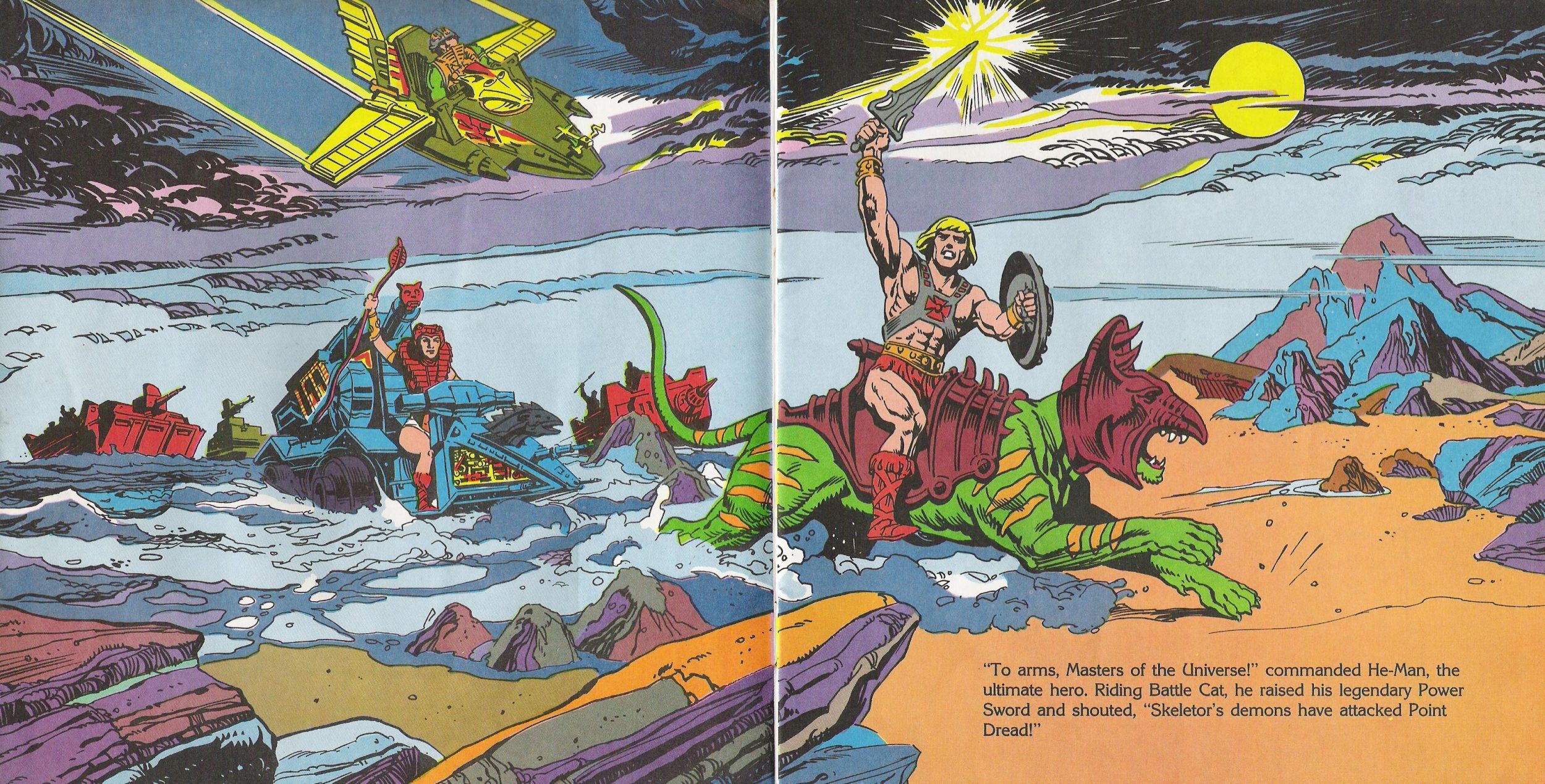
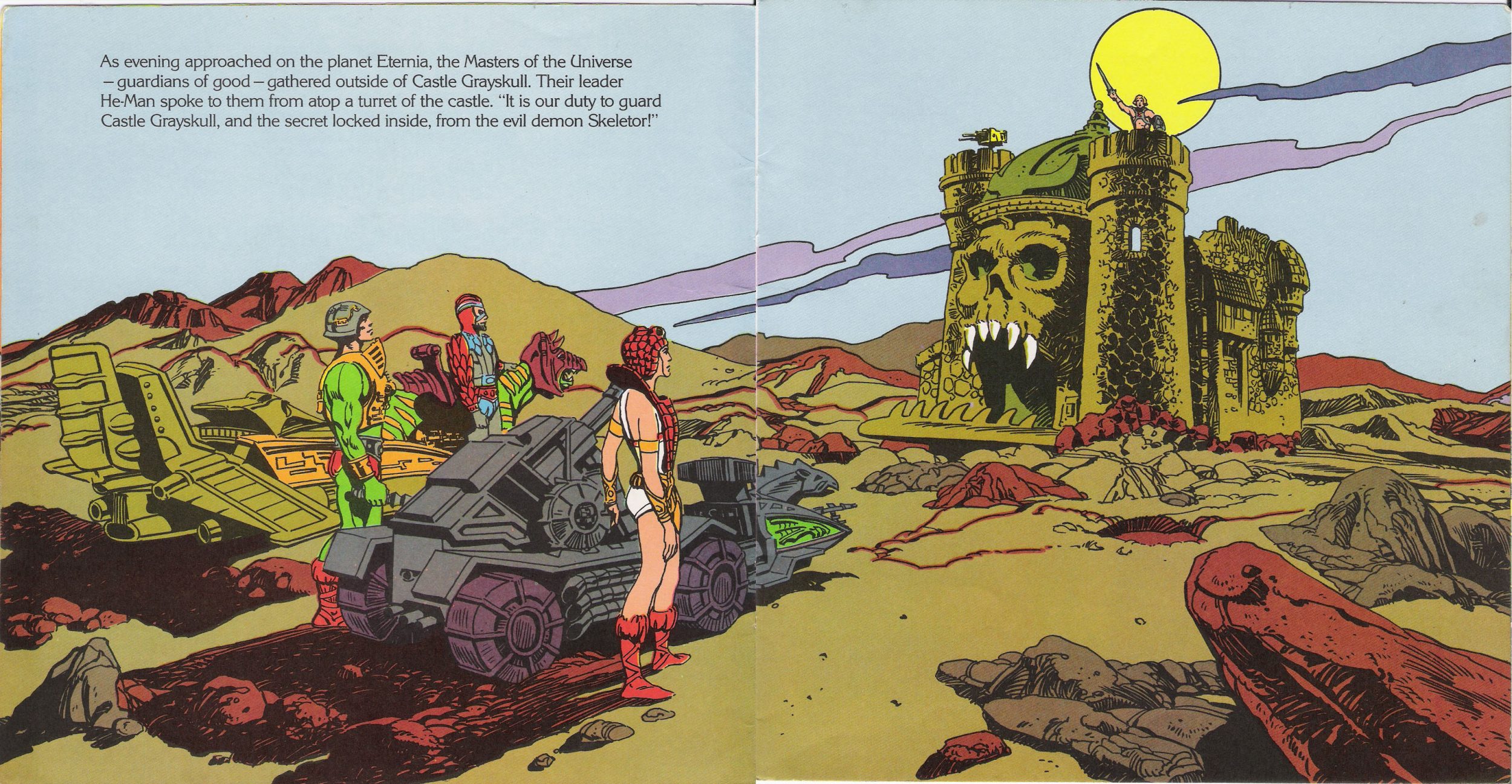



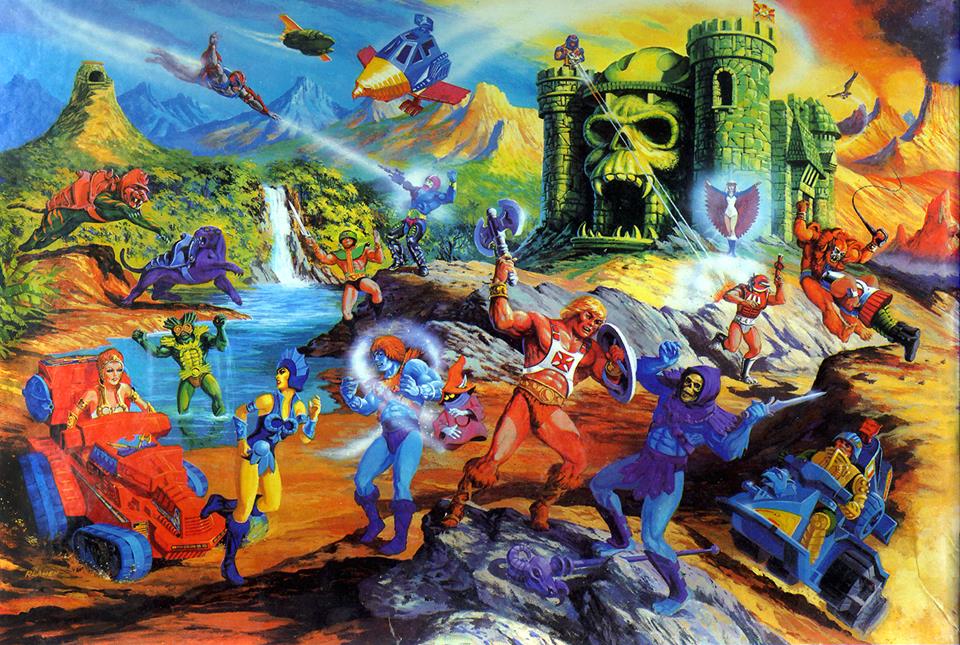
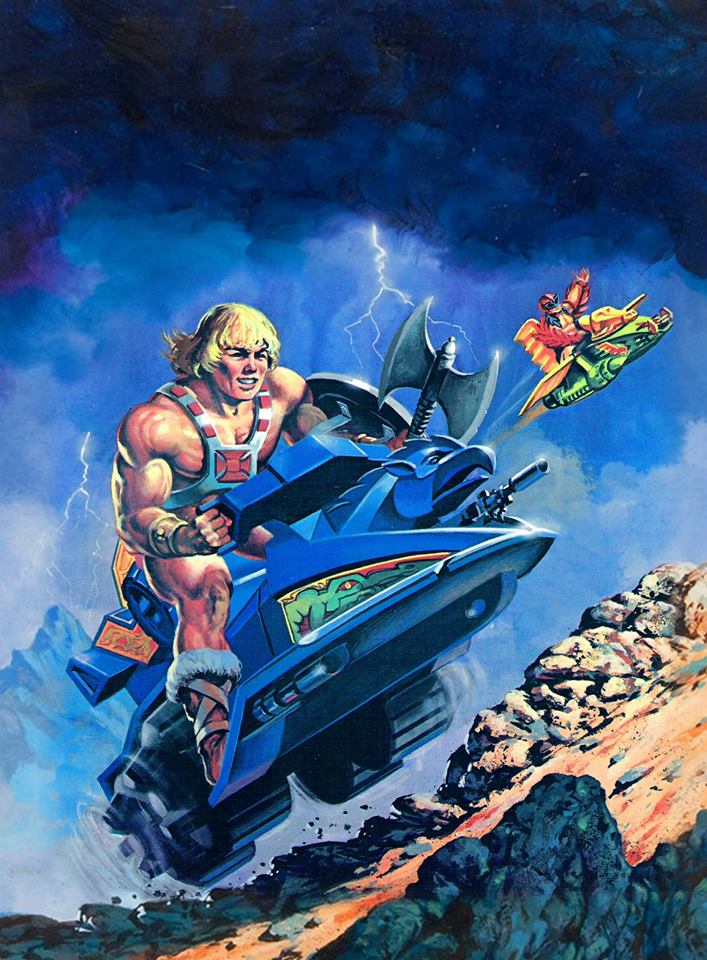
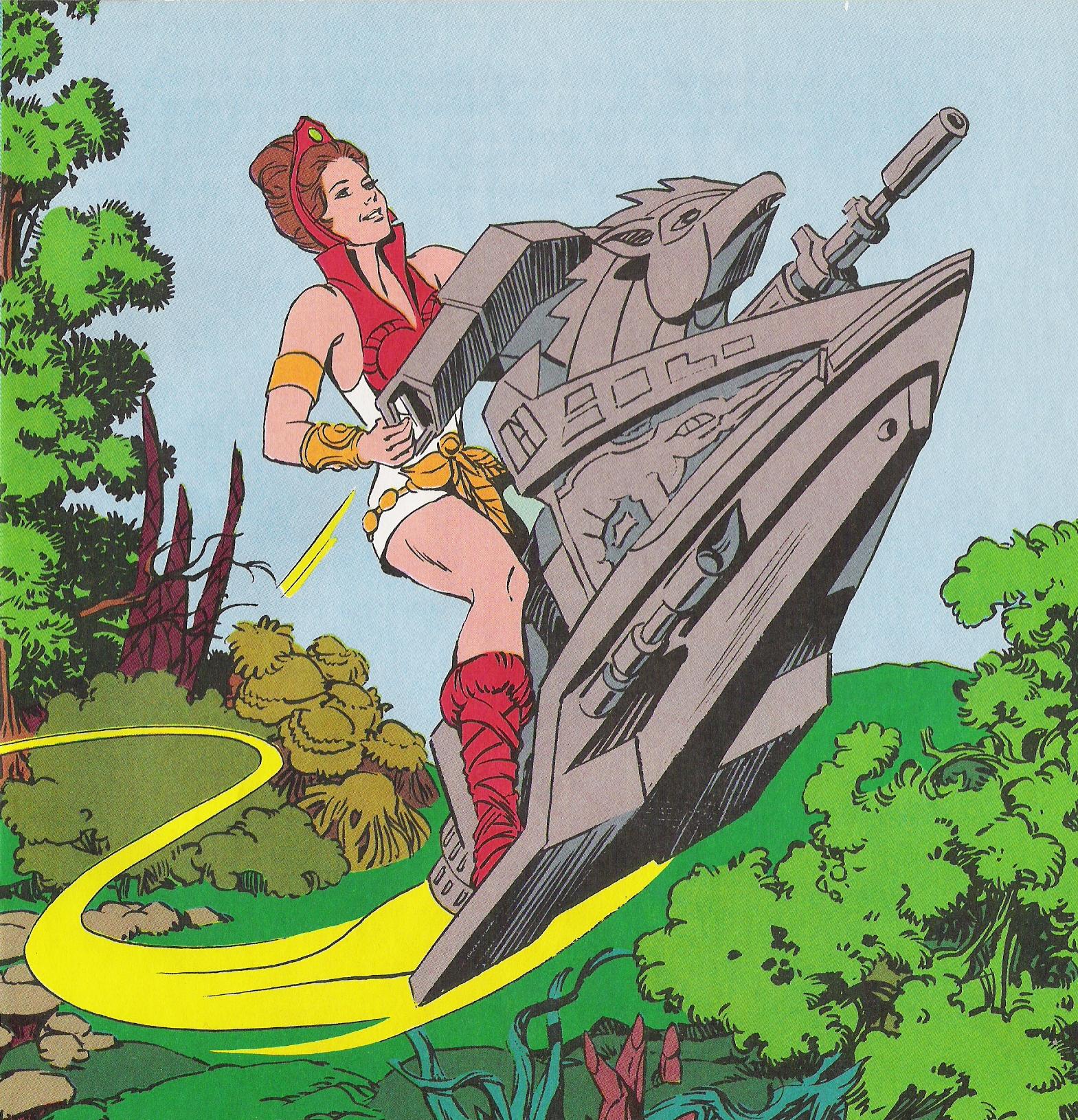
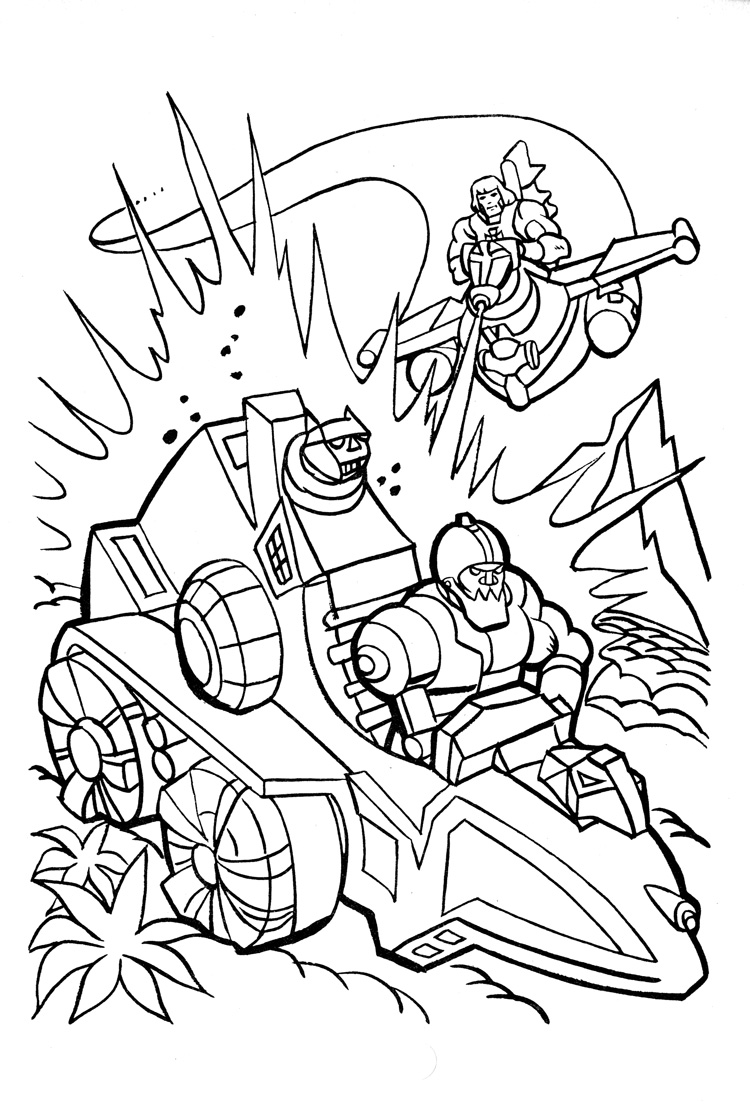
Animation
Filmation primarily depicted the Sky Sled portion of the Battle Ram, although occasionally the complete vehicle would make an appearance. A green version with a snake head called the Doom Buggy was also created. As with most Filmation depictions, the design was simplified to facilitate animation:
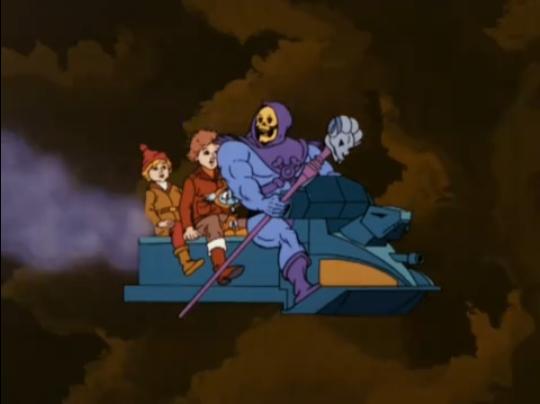





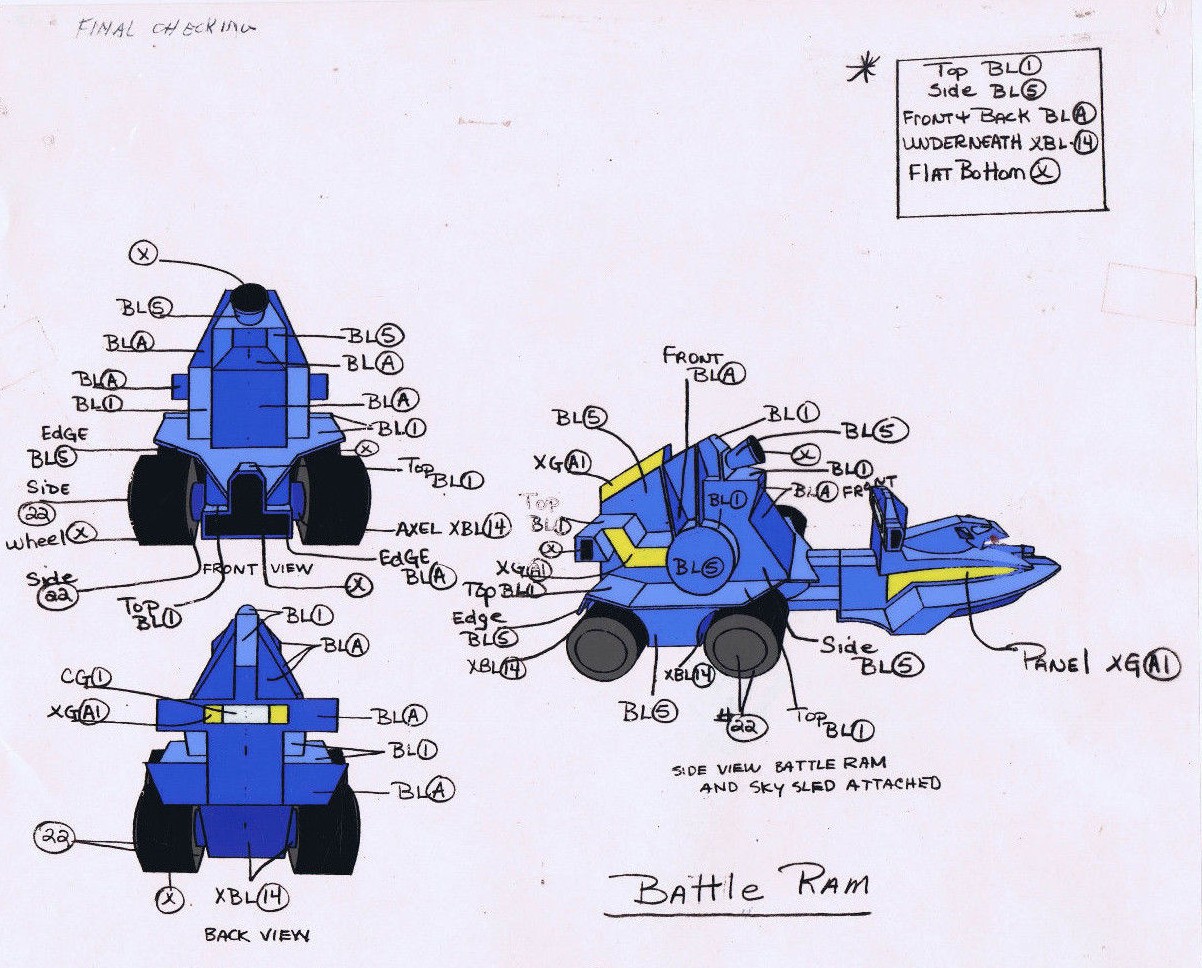
In the Filmation-produced MOTU commercial (as well as the series guide), however, just about everything had the level of detail of the actual toys. The image immediately below looks rotoscoped:
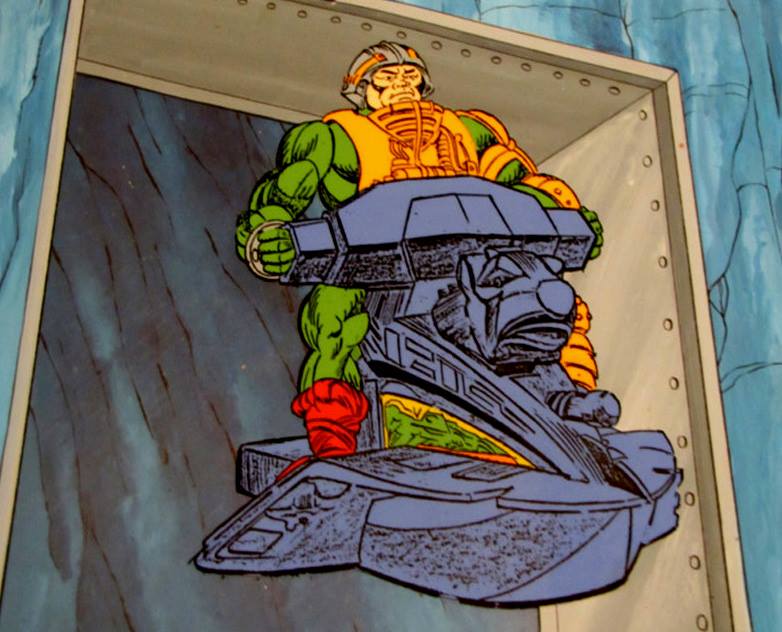
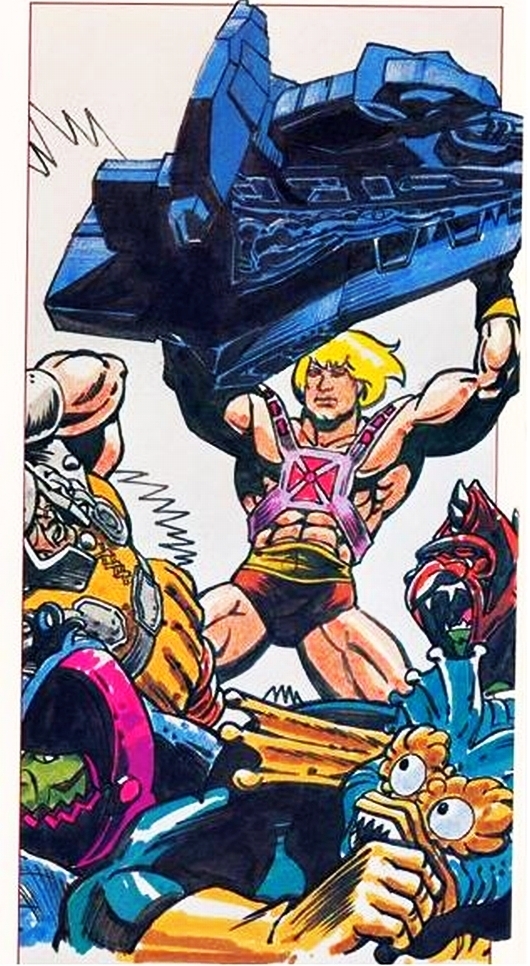
There were many great vehicles produced for the Masters of the Universe toyline, but in my opinion, none greater than the amazing Battle Ram.
